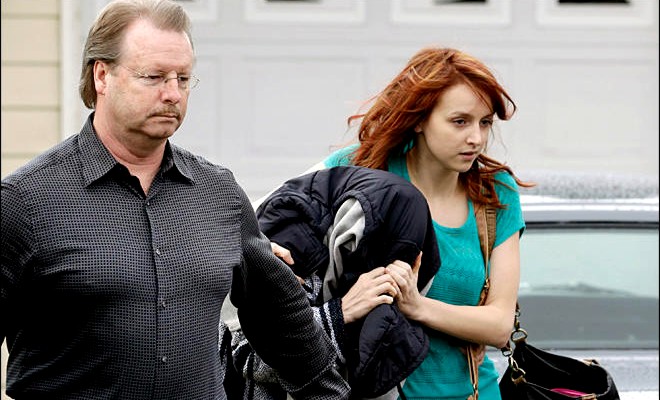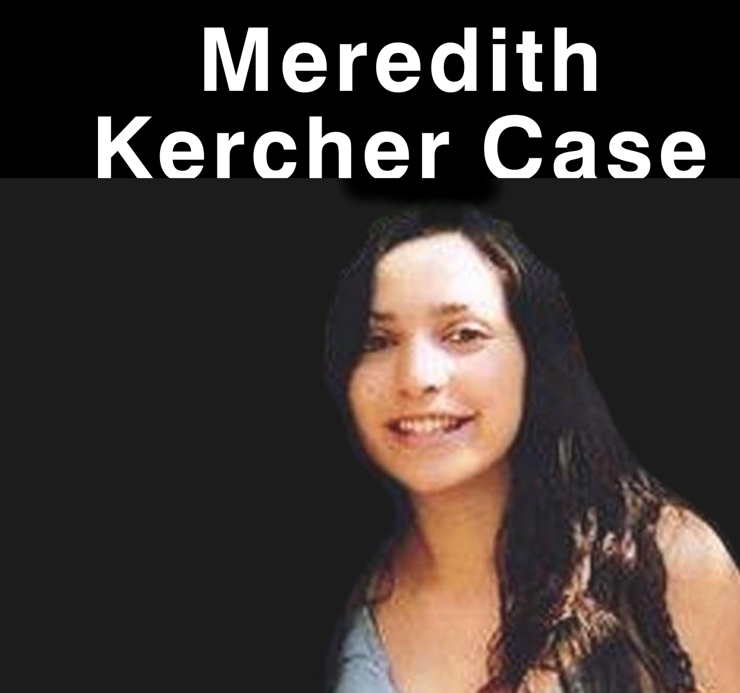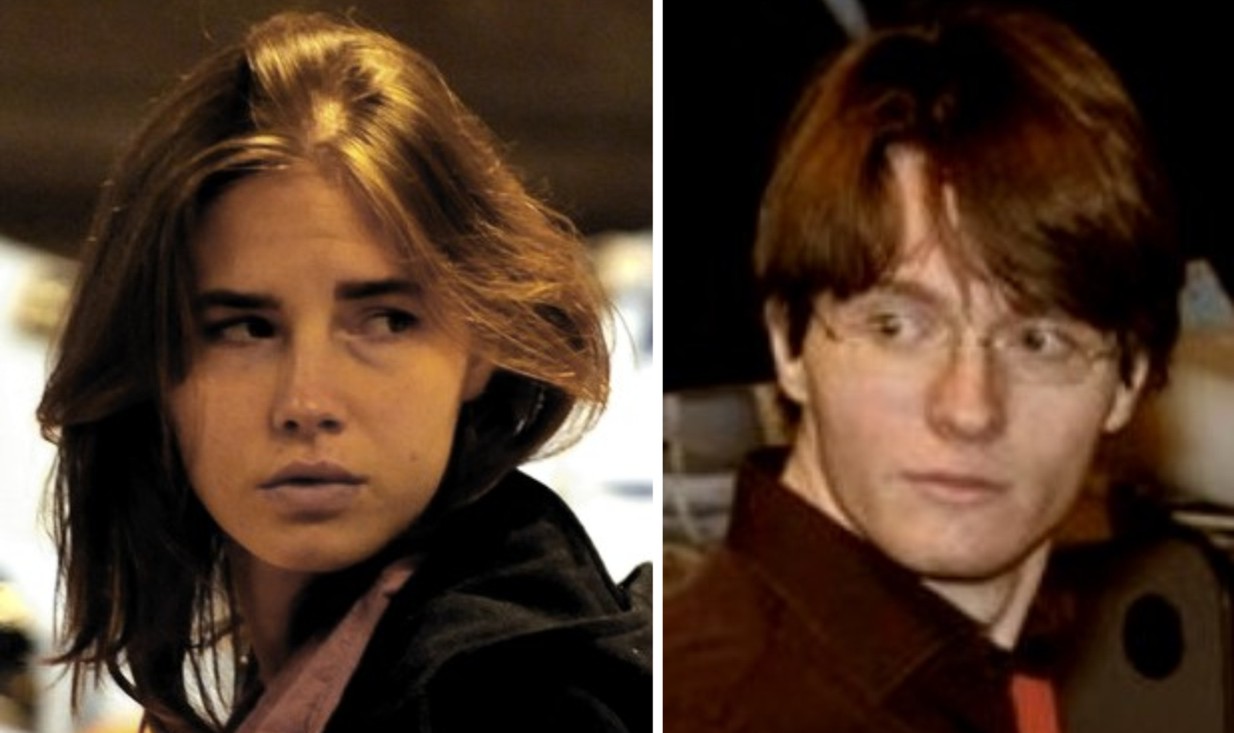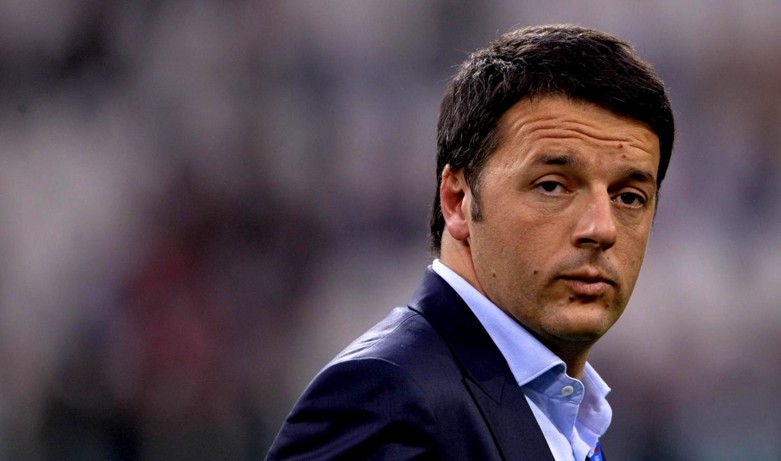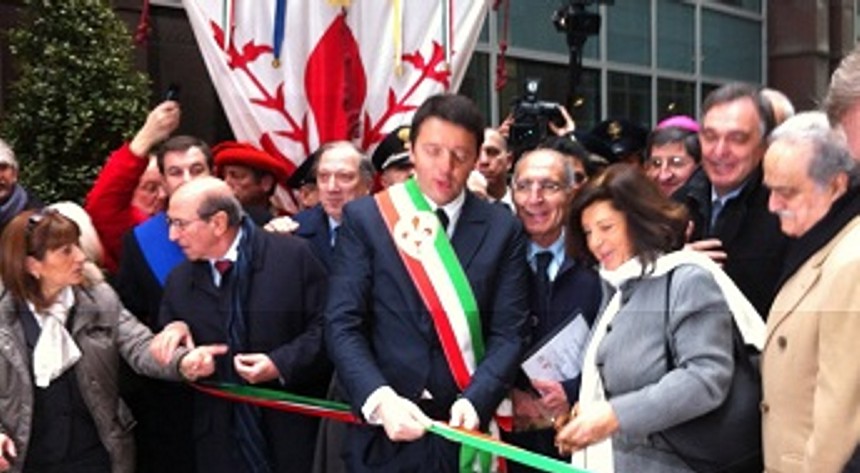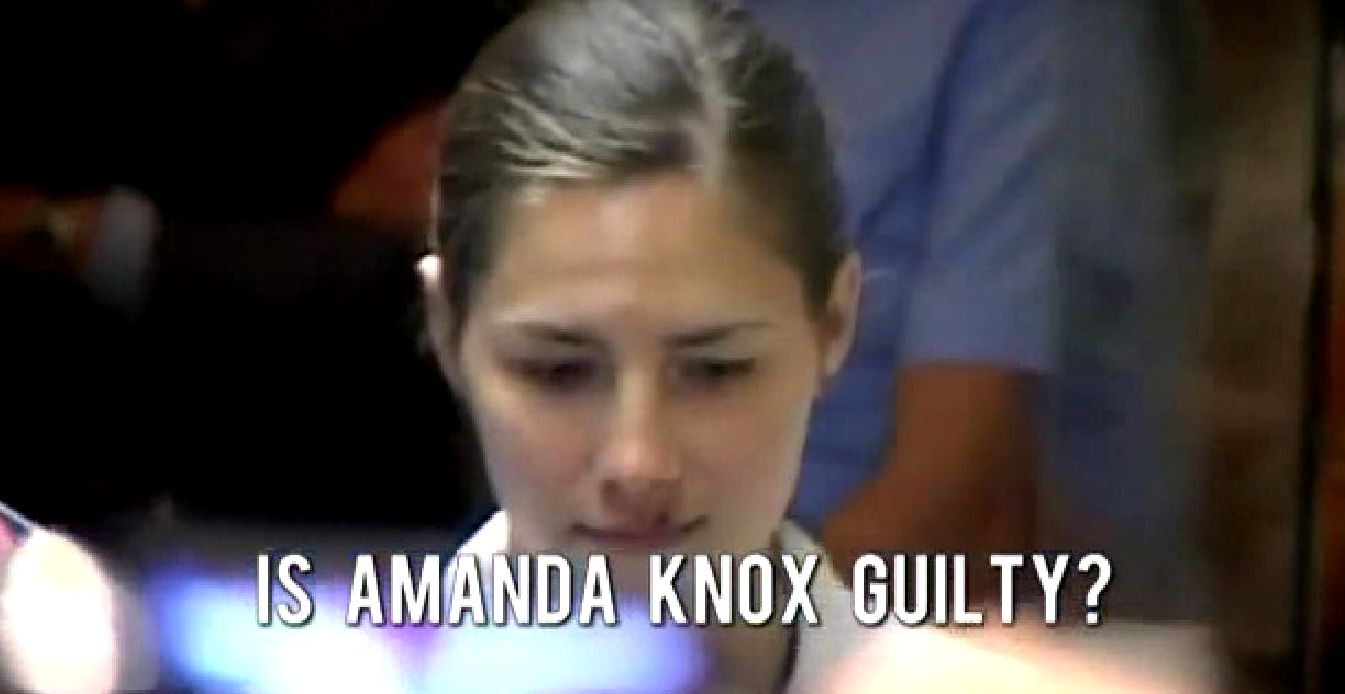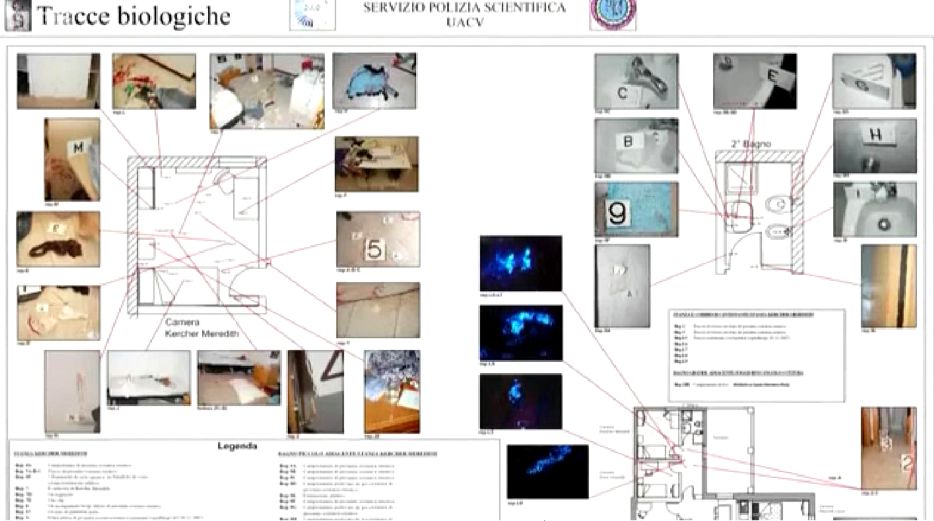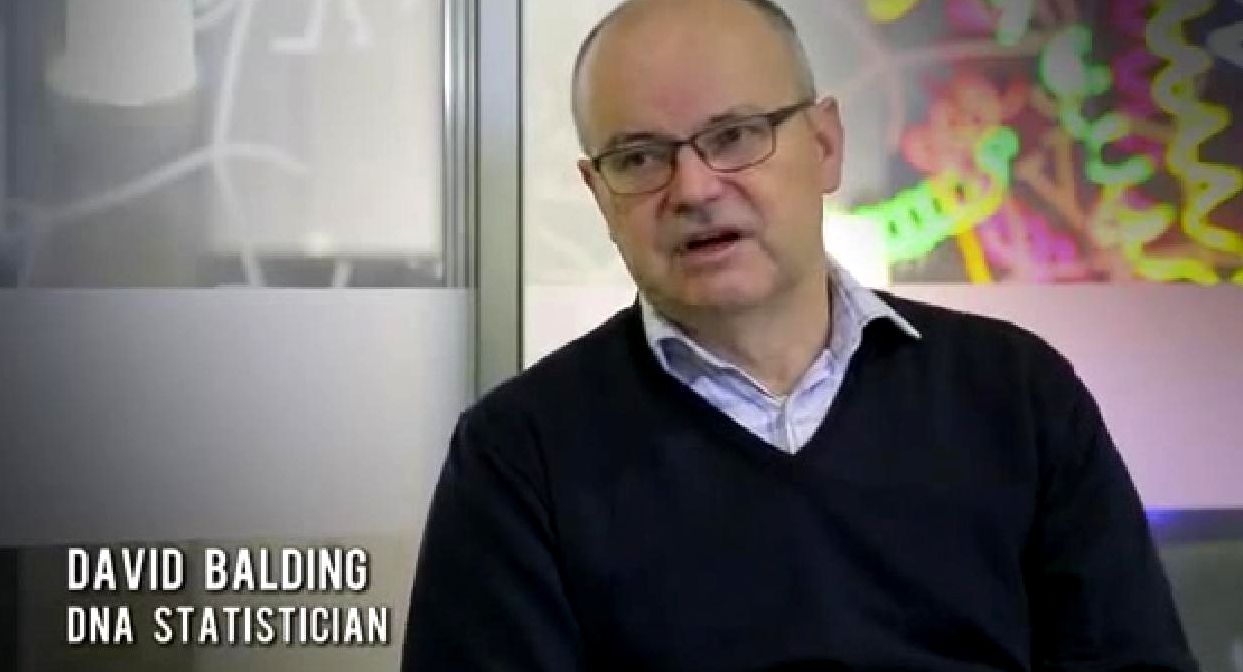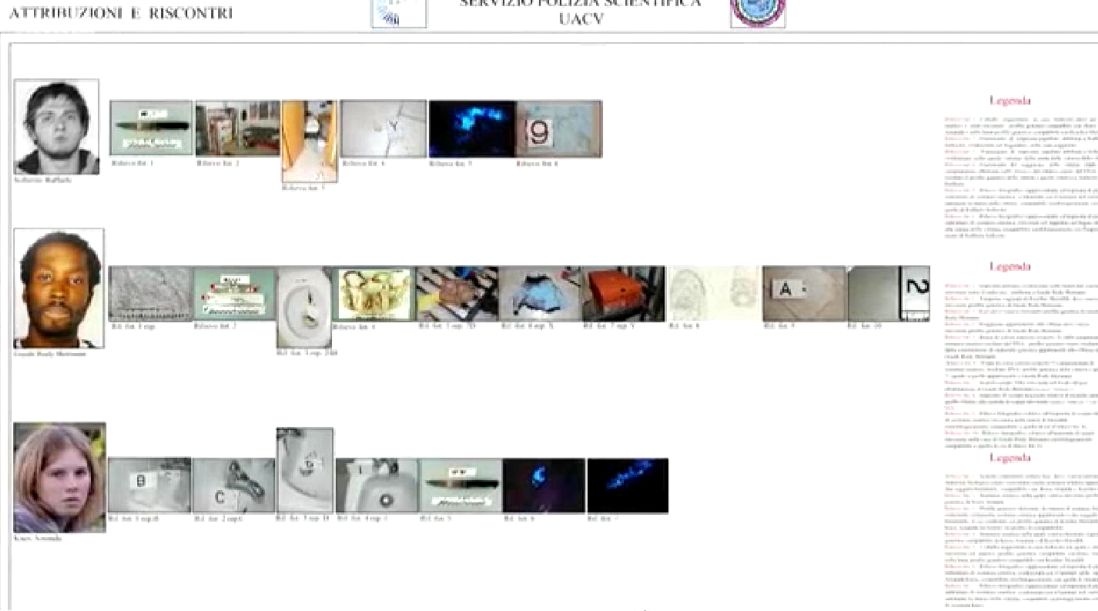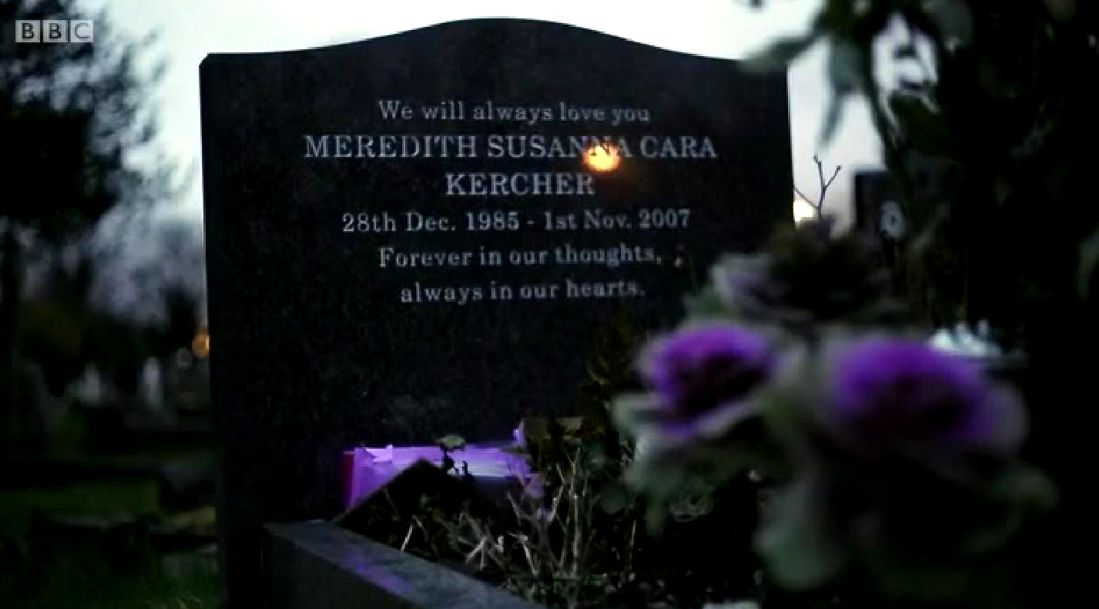
Category: Raff Sollecito PR
Wednesday, March 12, 2014
Council Of Magistrates In Effect Shrugs At Judge Nencini Answering Loaded Question Of A Reporter
Posted by Peter Quennell
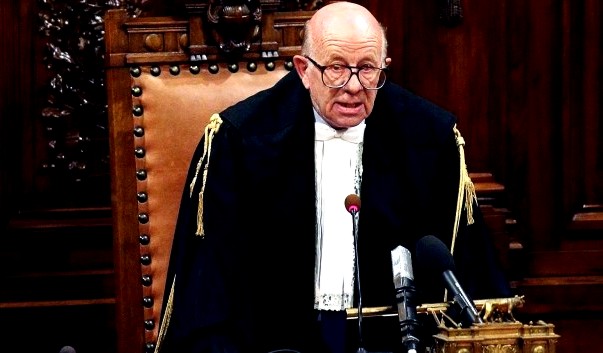
[Cassation judge Antonio Esposito who just faced down a similar complaint to the CSM]
The only ones pushing for the CSM committee hearing today and maybe another one at Cassation were Giulia Bongiorno and a few political friends.
Everybody knows she has once again lost very big and once again is snakily trying to demonize the court rather than gracefully moving on.
The final vote of the full CSM will be announced next week, but it seems a foregone conclusion. The Council will shrug and move on.
Judge Nencini explained himself well for one hour (with his wife, also a judge, present) and probably no magistrate on the Council would have acted so differently, given that the michievous reporter had been asking if the killing of Meredith happened simply because the three had nothing better to do.
Maybe some of the magistrates were thinking “So Bongiorno didnt put Sollecito on the stand? Hmmm, she KNOWS of his guilt only too well”. There is no mood among them to to see the defiant Sollecito who has slimed the system and slimed a much admired judge use a loophole to get himself off.
Jools explained the context of today’s hearing several weeks ago and translated one of the media reports for us today.
Knox, Sollecito judge unlikely to be disciplined by CSM
Inquiry over post-conviction press statements
Rome, March 11 - The Italian judiciary’s self-governing body, the CSM, is likely to drop an inquiry into a Florence judge who broke Italian legal convention by giving press interviews after convicting Amanda Knox and her ex-boyfriend Raffaele Sollecito for the 2007 murder of British student Meredith Kercher in February, judicial sources said Tuesday.
In Italy, judges usually only talk about their verdicts via written explanations published at least a month after they are handed down. But Alessandro Nencini, the head of the panel that sentenced Sollecito to 25 years and American citizen Knox to 28 and a half years at the repeat of the appeals-level trial, gave three interviews to different newspapers that were published February 1.
As a result, Nencini was accused of being biased. One of the most controversial aspects is that in one of the interviews, Nencini seemed to suggest that the fact Sollecito had not allowed himself to be cross-examined had damaged his chances of getting off.
The judge told a CSM commission Wednesday that he did not give interviews, but rather spoke in passing to reporters at the courthouse. He also denied saying the murder was the result of ‘‘kid’s play’’ gone wrong, or expressing an opinion on Sollecito’s defense strategy.
The hearing transcript will be available within a week, when the CSM commission will make its opinion official. The consensus seems to be that Nencini’s statements to the press may have been ill-timed, but not enough to justify a transfer, judicial sources said. Nencini is still not out of the woods, pending the result of justice ministry and Cassation Court inquiries that could lead to disciplinary action against him.
Monday, March 03, 2014
As Knox & Sollecito Try To Separate Themselves, Each Is Digging The Other In Deeper
Posted by willsavive
1. Sollecito Blabs Yet Again
One of an increasingly long list of “gotchas” for the prosecution, flowing from their tendencies to talk way, way too much.
In a recent exclusive interview on an Italian TV news broadcast, Sollecito said he has several “unanswered questions” for his former girlfriend, Amanda Knox.
“You all know that the focus was only through Amanda to her behavior, to her peculiar behaviour, but whatever it is, I’m not guilty for it. “Why do they convict me? Why do put me on the corner and say that I’m guilty just because in their minds I have to be guilty because I was her boyfriend. It doesn’t make any sense to me.”
This adds yet another waiver to the many different explanations Sollecito provided over the years about the same details.
In their “official” story, in the part that remained consistent, Knox and Sollecito both claimed that Knox left his flat the morning after Kercher’s murder and returned home, where she noticed the door left wide open and witnessed blood spots in the bathroom.
Knox claimed that she found it odd and just assumed that one of her roommates was menstruating and left blood behind. She proceeded to take a shower and returned to Sollecito’s flat and ate breakfast.
2. Telling Narrative Change
“Certainly I asked her questions,” Sollecito explained in his latest interview. “Why did she take a shower? Why did she spend so much time there?” When asked what responses he had for these question Sollecito replied, “I don’t have answers.”
In the interview, Sollecito said Knox left his apartment to take a shower, then returned hours later looking “very agitated.”
Yet, in an interview with Kate Mansey on 4 November 2007 just two days after the murder, and two days prior to arrest, Sollecito said:
But when she went into the bathroom she saw spots of blood all over the bath and sink. That’s when she started getting really afraid and ran back to my place because she didn’t want to go into the house alone.
3. RS Differs Sharply From Knox
This is a far cry from what Knox said in her email also dated 4 November 2007 to friends and family, Knox wrote:
I returned to raffael’s place. after we had used the mop to clean up the kitchen i told raffael about what i had seen in the house over breakfast. the strange blood in the bathroom, the door wide open, the shit left in the toilet. he suggested i call one of my roommates, so I called filomena.” (6th paragraph).
The discrepancies between Knox’s version and Sollecito’s version is strikingly different.
- Raffele claims Knox was visibly distraught when she returned and that this was the focus of discussion (i.e. being the first thing they discussed).
- Knox claims that she did not even bring up the bizarre circumstances back at her apartment until “after” they finished mopping the kitchen floor.
4. My Analysis Of The Above
In his latest statement, Sollecito is clearly trying to distance himself from Knox, believing that there is far more evidence against her than against him. But:
- Sollecito forgets to mention the bloody barefoot prints at Knox’s apartment, found to be in Kercher’s blood attributed to him.
- Also the knife found in his apartment that scientists say was the murder weapon.
- Also his DNA found on Meredith Kercher’s bra that was found in her room, even though Sollecito claims that he was never ever in that room.
- Also his own strange behavior, which includes providing a false alibi (saying he and Knox were at a party with a friend on the night of the murder).
Also several conflicting other versions.
But what’s there to question if you [Raffaele] were with Knox the whole day and night of Meredith Kercher’s murder?
It appears as though Sollecito is alluding to the notion that he knows something far more than he is saying; yet, he is being very careful with his words””only providing us with a hint of this.
His latest statement is a clear attempt to distance himself from Knox.
5. Sollecito Freaks Out On Twitter
Sollecito appeared on Twitter recently, for what he claimed was to answer questions and clear his name.
He was very outspoken of his innocence and had no problem in his witty, sarcastic responses to those who questioned his innocence.
However, when I asked him about the Mansey interview he denied claiming that he was with Knox at a friend’s party on the night of the murder [huh?!].
Sollecito disappeared for a couple of days, came back to Twitter writing only in Italian, and ceased responding to any more questions.
Is it possible that Sollecito will turn on Knox altogether at some point when the pressure mounts over the next year? Guess we’ll have to wait and see”¦
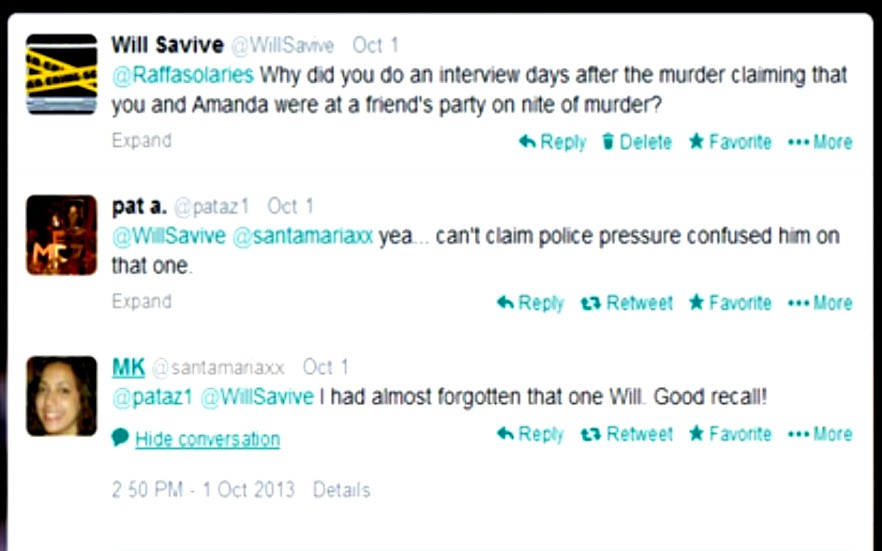
Cross-posted from Savive’s Corner
Friday, February 28, 2014
What We Might Read Into Sollecito Lawyer Giulia Bongiornos Final Arguments To The Appeal Judges
Posted by Machiavelli
Under the table & over the top
The picture of a serene-looking Giulia Bongiorno waving a couple of knives in court on 9 January may be visual inspiration to this reflection about what we can understand from the structure and content of her closing arguments.
A very peculiar feature of her arguments was the desperate opening, suggesting to put the investigation ““ and the whole justice proceedings ““ on trial.
The introductive topic of her speech is a quote from a book by Alessandro Satta, a narrative description of the riotous irruption of the mob inside the Revolutionary Tribunal hearing room on Sep. 2. 1792, the defendants are the some of the King’s Swiss guards.
The passage by Satta describes the “horrendous” vision of a hord of sanculots slowly gathering outside the court, Bongiorno compares that to the angry mob in Perugia after the first appeal verdict.
But if you read the same text by Satta a little further, a few lines beyond the snippet Bongiorno was reading, the narration goes on describing how sanculots manage to enter the courtroom, in a force of hundreds ready to lynch the defendants, but they are suddenly halted by an authoritative order of the Judge, and they unexpectedly obey.
Just after that, Satta drops in an explanatory quote from the book Le Tribunal révolutionnaire (by historian Lenotre) saying: “the people understood that these highly educated individuals in black robes would have gone on with the action started by the hords, and they would accomplish it more perfectly”.
It seems like Bongiorno opened her speech with an implicit depiction of the judges and magistrates of Perugia as kind of Jacobin extremists whose task is to “legitimize” the vindictive fury of a pitchforks mob.
The quote she read did not include Satta’s conclusive lines, so that the consequent thought about the judges’ role remained unexpressed and in the background.
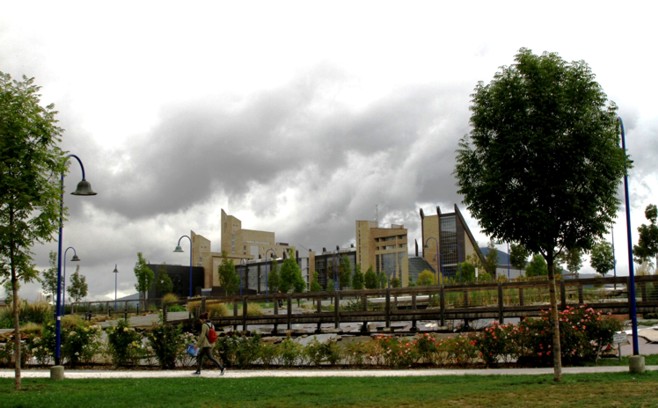
(Photo by Machiavelli_Aki)
A side note about Bongiorno’s arguments: in fact I had the feeling that allusion to implicit subtexts was something that belonged to her speech as a method or a style, it marked the whole of her arguments. You may recall Wittgenstein’s dictum “This work consists of two part, what is written in it, and what is not written in it. The latter is the most important part.”
Such a motto might be apt to address the major feature of Bongiorno’s defensive argument, insofar as she conveyed that something that “couldn’t be talked about openly” was there and that was probably a main argument.
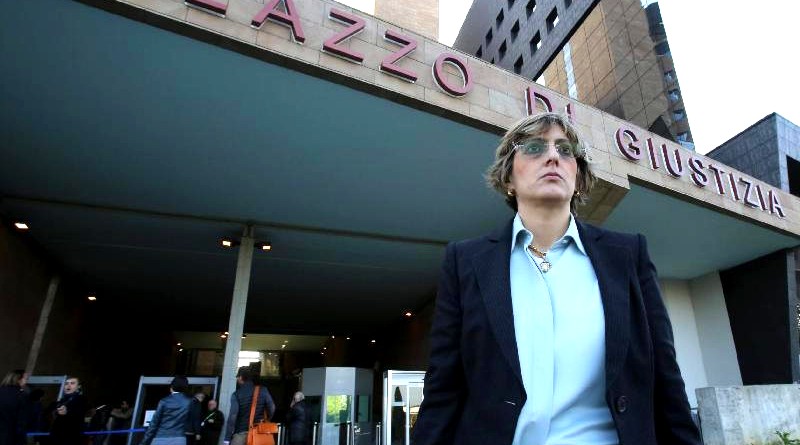
(photo by Ansa)
At first, as I said, she went through a brief emotional recollection of her moments while in Perugia surrounded by a raging mob, and then she unfolded the rest of her introductive section.
The purpose of this bit of revolutionary narrative first juxtaposing the Perugian citizens to Sanculots and the judges to Jacobins, and then, immediately following, a series of accessory arguments all encompassed by an introductive function, all this was clearly intended to set a framework thesis meant to work as a basis for the structure of the whole defensive arguments.
It is in fact a peculiar structure, apparently entirely resting upon one, single elaborate premise.
The thesis she places at the foundation of the entire defensive argumentation is the following: the trial as a whole, as much as its outcome, had been somehow determined and “tainted” from the beginning by events which occurred within a very short framework of time, in the very early days of the investigation, the weeks around the time of the suspects’ arrests.
Bongiorno suggested that only this “short period” ““ the early days of November 2007 - is what matters and the only topic worth of a defence analysis; since this was the time frame within which - according to Bongiorno - everything was decided, this was the time when some “errors” in the investigation occurred, before the point when a veil of prejudice and hatred fell upon people’s hearts and minds like kind of black curtain, preventing from that moment on any fair or rational judgement.
Aggressive Digressions
After the quoting of Satta’s speech, she develops her introduction for a while, branching out into some political-sociological speculations (such as that authorities chose the crime scenario that was most reassuring for the population) as well as some political-anthropological consideration (like the theory that free spirited women are seen as suspicious as a consequence of women empowerment movements).
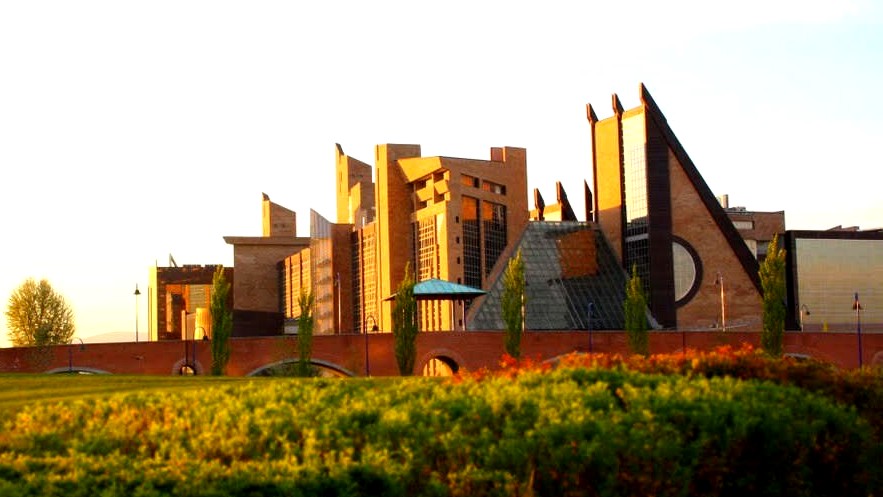
(Palace of Justice of Florence ““ photo by FrederickStudio)
A speech opening as did Bongiorno’s, that is, relying on a set of over-the-top considerations, and apparently so much depending upon one extreme premise, unavoidably conveys a perception of weakness, which is at risk to be transferred to the rest of the argumentation.
Thus, it would be a logical question to ask ourselves: why did Bongiorno chose such a setting and introduction, with several risky, over-shooting arguments?
A perception that the argument was unconvincing was palpable among the public as she was unfolding her theories about Perugian police opting for “political” scenarios and about sexy and free women seen as suspicious because of the women’s political movement.
Scepticism emerged even more openly when she described a scene with Amanda Knox releasing her false accusations while speaking under the hypnotic influence of interpreter Anna Donnino - whom she called “psychic” ““ which triggered some stifled laughs among the public.
Then her long introduction dealt with the unfolding of a rhetorical structure set around the concept of “half”.
I use the word ” rhetoric” in a most technical, non-derogatory sense, to mean the setting of a clear order and concepts designed to be easily remembered, anchored to multiple implicit suggestions, so as to remain impressed in the mind of listeners what is distinctive of the style of Giulia Bongiorno.
Introducing to “˜Halves’
In the previous trial instances she didn’t miss the opportunity to borrow characters such as Jessica Rabbit, Amelie and the Venus in a Fur. I thought she would mention at least a few characters of Disney or the Harry Potter saga this time too, and I was not disappointed as she met expectations on this matter (she did mention Harry Potter, the Eskimo kiss “˜Unca-Nunca’, the Bunga Bunga, the Aladdin Lamp and 9½ Weeks).
She entered the topical part of the introductive section saying “˜basta’ to always focusing on Amanda’s personality alone, while considering Raffaele just Knox’s other “half”, he is not half a character, he should not be seen as reflexion of Knox.
The curse of being “half” chases him also, meaning there are only “half pieces of evidence” against him. And this is the rhetoric structure envigorating the arguments after the introduction, the concept of “half” .
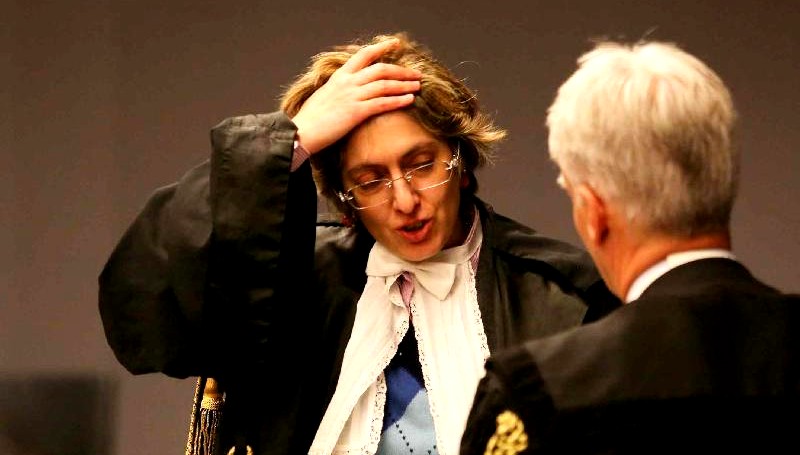
Only half pieces of evidence, almost a half admission, or the clear suggestion that there is maybe one “other half” of something (of culprits?) somewhere else, something not to be said, something that is not here.
The concept of “half” recurs and somehow pervades her defence, we should say something more about later on because she picked it up also in the subsequent hours of speech.
Some videos from the Florence trial available may still be available at the Sky site.
Primordial Fossils
Only after recollecting all these things in the “˜aggressive digressions’ over the introductive part, she goes on with a ponderous section which is the main part of her argumentation.
It’s a topic directly stemming from the introductive themes and premises, in the sense that this main part focuses on and blows up events of the first four days of investigation. It zeroes on few small details of the investigation history, the previous introductive part functionally working to justify the choice and to limit the argumentation to these topics.
Something the listener would notice from this first and main part of the arguments, as everyone well understands, is that these arguments are arranged in a peculiar type of architecture. A choice that makes crystal clear the actual state of the defence’s options.
The defence strategy is to focus attention on the supposed flaws in evidence collection at the beginning of the investigation, and not on the evidence set itself.
Bongiorno’s arguments do not map out the evidence set array. They do not devolve an effort of analysis in proportion to the actual weight of the of pieces of evidence.
The bulk of her speech in fact can be summarized as a criticism of some historical happenings ““ what she sees as such ““ which allegedly occurred within a very small time frame. She devoted hours to attacking the beginning of the investigation, early errors such as that the shoe print that had been wrongly attributed to Sollecito on a first assessment.
It appears this attack against the early procedures of the investigation was really considered to be the most effective weapon the defence had left.
The “˜topics’ Bongiorno addressed in this attack as “˜main points’ of evidence against Sollecito, are only three: the wrongly attribute shoeprint, Sollecito’s side-tracking the investigation, and “˜the knife’ (a topic which gets picked up again later, with a long discussion focused on the blade length).
In the same “˜knife’ topic she included DNA discussion, in a connected digression she dealt with the bra claps, called all the scientific evidence collection “˜the mother of mistakes’ and offered again the known criticism of Stefanoni’s alleged “suspect-centred”.
Later in her speech, she dealt with the other evidence topics, parroted the “˜principles’ expressed in the Conti & Vecchiotti report, offered the known arguments about the bathmat print, etc.
But the bulk of her defence hinged around those “˜mistakes’ in the early investigation phase, this was the actual core of her argumentation, while the other pieces of evidence were dealt with summarily, I had the impression they were almost treated as accessories.
It was clear above all that the defence was not battling the structure of the evidence actually existing today, they were battling a minuscule part of it, or better they were battling something else, something which is not directly the evidence, but rather some historical foundations of the accusation building.
Basically what Bongiorno conveyed is, the fighting terrain was the “˜investigators’ errors’, their “˜excesses’. That is, they were not actively contending Raffaele’s innocence any more.
The implicit content was rather obvious to the listener: a direct claim of Sollecito’s innocence had been already abandoned, that territory was left beyond the lines and the defensive front had been drawn back.
The topic now was not innocence, but rather how the accusation had been unfair and excessive.
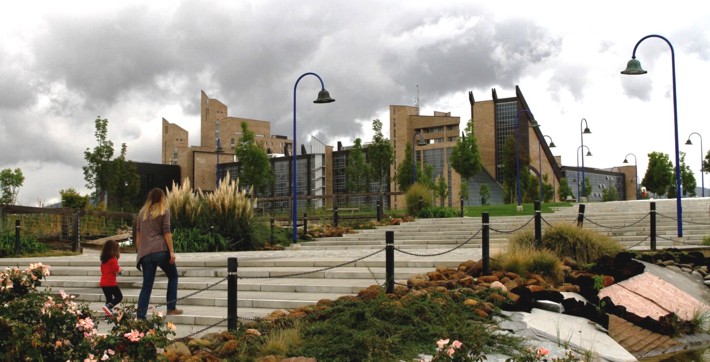
At her opening, the quote of Satta was a device to draw attention to the events at the “origin”, so as to prepare listeners for the fact that defence arguments will be focused on what happened during the moments before the “black curtain” came down.
Hence the a long introduction starting from an image of the fury of a mob of sanculots, a narrative on this theme: people were willing to convict the defendants immediately and judges were legitimizing people’s violence.
She oriented the discussion towards the topic of early prejudice and excesses, so to justify the fact that she will talk about the early phases rather than the evidence set, and then she introduced the leit-motiv of the “half”.
This means, rather than disputing the pieces of evidence, Bongiorno wanted to set a “trial of the investigation”, she zeroed on just a few details actually not having much relevance in the actual evidence set.
She talked at length about elements that are kind of fossils ““ like when she went on discussing about the number of circles in the sole of Guede’s shoeprint ““ putting the alleged “errors” in the course of the investigation on trial, and her speech at times sounded as if it was a lecture about dinosaurs, recalling curious things now extinct.
The explicit function of her introduction was to justify her setting aside the evidence set, downplaying it by framing it into a historical moment, maintaining that it was collected and interpreted when investigators were already beyond the “black curtain” of bias, therefore tainted by prejudice, while judges were like sycophants before an angry mob.
The purpose behind the Black Curtain
The implicit, most important function of the introduction was accomplished via the concept of “half” and all the subliminal suggestions attached.
We should ask ourselves: is it reasonable to believe Bongiorno was so naïve to expect that the court may accept a theory about a dismissal of evidence in limine?
The answer is no. Bongiorno knew perfectly well that her preliminary criticism of the investigation would not lead to a dismissal of the evidence.
Bongiorno also knew that the series of preliminary arguments she would offer would be considered ineffective by judges. Such as that the knife DNA should be seen as unreliable preliminarily, that Stefanoni’s work lacked “transparency”, that Vecchiotti and Conti’s “method” should be taken at face value (Bongiorno knows C&V’s intellectual honesty was called manifestly questionable by the Supreme Court ), that this and that allele in the bra clasp DNA should not be considered because, etc.
She also knows that this court will not allow pieces of evidence to be considered separately from each other in a parcelled out way, and that imperfection of single pieces themselves do not work as a logical argument. Even less could she dismiss the evidence based on political and anthropological theories.
From the fact that she was setting afoot on a trial of the investigation instead of battling the evidence, the rational listener infers that she is well aware of the weakness of her position, since it implies that the evidence set as the battleground would be indefensible. She needs to search for another terrain of attack, a different structure, as the only possible move.
But there is also another implication. She does need to engage and draw attention to areas where she could “win” something, but this also means that her intent was to “soften” the accusation, to work it out at the flanks rather than face it frontally; to reduce the size of some fundamentals, the “excess” of the accusation.
In other words, to shorten the sentence. And if possible, to separate Sollecito’s position from that of Amanda Knox, albeit within the boundaries of her client’s plea.
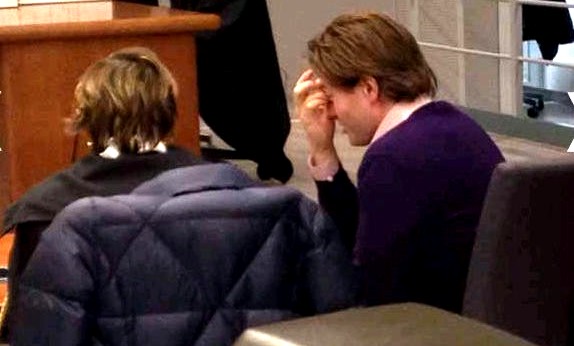
Her strategy of attack had a reason, that was to try to soften the accusatory attitude against Sollecito. Besides being risky (may sound extremely unconvincing) the strategy was also loaded with implicit meanings.
What was most stunning to me ““ as it was a recurrent topic through her whole speech ““ was the concept of “half”. She picked up this introductive theme several times, such as while speaking about the medical findings explaining that only “half” the length of the blade would be used, if a knife so large as Sollecito’s kitchen knife was used, saying that, in this event, this would mean the perpetrator did not intend to kill and killing was the effect of “mistake”, an involuntary movement.
The importance of the length of the big blade and its “half” was emphasized by a waving of knifes, in a quite impressive theatrical performance: “Either the big wound was made by a smaller knife” that was held by “someone else” or the knife was “plunged only by half” showing there was no intent to kill.
All this is to be coupled with the fact that, as said above, she devoted a main portion of her 6-hour speech to discussing things that are fossils, elements not existing any more.
She dealt later with other pieces of evidence too, though in a way that seemed somehow marginal, and she did not deal with some of them at all - the inconsistencies in Knox’s account, for example, were left completely out.
She was not that kind with Knox’s written memorials either, calling them “farneticanti” (waffling, raving).
I noted her complaining about Raffaele being “halved”, as his character is portrayed as depending on Amanda’s and thus seen as equally guilty insofar he was Amanda’s half ““ and this effect is somehow transferred to pieces of evidence.
Bongiorno’s rhetoric emphasizes that Sollecito was accused on “half” pieces of evidence (you perceive that the metaphorical repeating of “half” implies that evidence actually exists, “by half”, and at the same time this complaint about being seen as “half” of something is a subliminal suggestion that the defendants should be considered separately, and their charges as well, thus maybe their responsibilities if considered separately may be different; and when it comes to discussing how the murderer used only half of the blade, the subliminal suggestion is bring down the charge by half, involuntary event/manslaughter versus voluntary murder).
The Mark of Infamy
Giulia Bongiorno picked on the investigators and acted as if she was putting the investigation on trial not because she thought that this would lkead to the defendants being found innocent, but exactly for the opposite reason, because she expected them to be found guilty.
Insults against Prosecutor General Crini, against witnesses and and gratuitous accusations are a risky path but they are also an overt attempt to “soften” the investigation scenario, rather than fight it frontally.
She had no hope to make her client look innocent, her only hope was to soften the strength of the accusation, to make him look less guilty, not so bad as the investigators saw him.
She pursued this in two ways, by suggesting that he should not be seen as the “half” of another perp but rather his responsibility should be considered separately, only that evidence which proves directly against him (Bongiorno repeatedly pointed out that Knox did not utter his name in her interrogation and statement), his actual responsibility might be much lesser than the charge for which he is accused.
The other arm of the defence’s pincer move, the second way to try diminish the accusation, was to portray the investigators in bad light. The “˜excess’ of accusation was to lay blame on investigators for their bias and errors.
Bongiorno’s attack against the investigation might be intended to achieve a psychological effect due to comparative process.
If you consider how the police are responsible for “˜excesses’ and disputable behaviours, you may think the investigators have been prone to gross mistakes that lead to exaggerating Sollecito’s implication, thus the accusation should be not be taken at face value and should be corrected. Maybe the correct assessment of evidence proves he not as much implicated as they had thought.
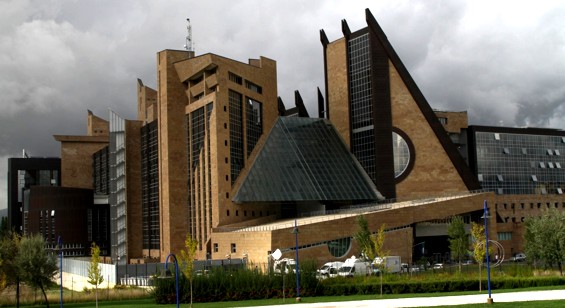
This seemed to be Sollecito’s own defence strategy, albeit implicit, since Bongiorno must restrain her action within the boundaries of her client’s plea.
In order to follow her strategy, however, Giulia Bongiorno decided to take a few steps which must be pointed out as particularly reprehensible and infamous.
I was surprised and stunned by those action because they qualify the character of Giulia Bongiorno as far worse than I thought, I really did not expect her to stoop so low.
The infamous part of Bongiorno’s speech is her gratuitous name calling and defamatory attack against Anna Donnino, her attempt to smear her professional reputation and the rude insult in calling her a “˜psychic’.
In real life Anna Donnino is a very respected professional, she has been working for the Questura on tasks of interpreter and language mediator (not as a “˜translator’).
She is also an intelligent person, she is precise and expresses herself with the utmost clarity as her lucid testimony shows.
She is known not only for having unquestionable professional ethics, but also she has an excellent reputation as a person; she is honest and humane and known by everybody for her extremely reassuring, protective temperament, and for her expertise and excellent performance of working with people.
She would help immigrants in difficulty to express themselves and understand their rights and was priceless helping the police to obtain precise information in their investigations.
As an expert in chuchotage and linguistic mediation from two foreign languages, the professional quality of her work is excellent. Her training and work is of interpreter and language mediator although sometimes shee is given translating tasks such as the translation of recordings and wiretappings.
The Questura of Perugia used to hire “˜language mediators’ at the time. You don’t know what a language mediator is? See a university course for a degree in Language Mediation.
The Questuras of some bigger cities also have “˜cultural mediators’ in addition. They are mother-tongue trained to deal with African or Chinese immigrants (one of the many young people having their internship as cultural mediator in a Questura is shown here.)
To me, this defamatory attack against Donnino was most disturbing. By doing this Bongiorno came across as surprisingly mean, I’d say what she did was really infamous.
Indeed this was not the only virulent attack, it came after insults to the city of Perugia as she was comparing its citizens to a mob of blood-thirsty fanatics.
This attack too is also particularly vicious, since it exploits, inflames and is subtly synergic with the tones of lies and prejudices disseminated by a perfidious propaganda strategy.
But at a certain point, Bongiorno focused the defamation against one person. As she unfolded a narrative about Anna Donnino acting as a “˜psychic’ who managed to hypnotize, to gaslight Knox to the point of inducing a state of trance in which she mistook a dream for reality, some people couldn’t help laughing in the courtroom.
But even if we consider the surreal and comical rather than the convincing effect, the defamatory intent stands out as reprehensible and humanly vicious.
This is because, as I said above, these particular insults were directed against a person distinguishable for her being a most decent, honest and trustworthy character, and also ““ a further reason ““ because of the recent events for which this person experienced personal suffering: Anna Donnino, a mother of teenagers, has been struck with cancer, and has undergone surgery.
She is under treatment but still currently remains in very bad health.
The attack against Anna Donnino is an action that rebounds as an ugly stain on the reputation of those who launched it. A young man from Perugia created a Facebook group to express a the citizens’ “hate” for those who lead a defamatory campaign of lies against the city. He collected over two thousand likes within three days.
Some of the comments were about Bongiorno’s insults against the city and against respected citizens, pointing out her outrageous hypocrisy since Giulia Bongiorno poses as a campaigner for the respect and dignity of women.
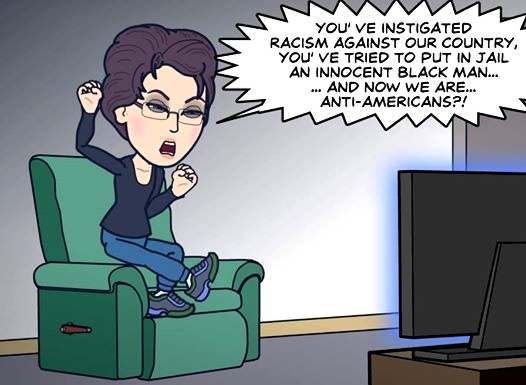
(a StripBit comment by a poster on a Facebook group)
Criticism of Giulia Bongriorno pointing out her hypocrisy is actually not a novelty, it has appeared long since in the press and on the internet.
But it’s hard to understand how someone like her, promoting an image of herself as an advocate for women and for correctness and respect in language and culture, could take such a an egregiously visible false step, come out with such stupid stereotypical rants, only for what looks like an awkward and useless cause.
Conclusion
A note for the record: we may recall Bongiorno has also attacked the Perugian police officers, citing the recording of some of their phone conversations in which they say bad words about the Sollecito family.
We can understand her outrage (at least we could, if only she were not the hypocrite she is) but at the same time we can’t fail to notice that she “forgot” to mention another half of the phone call recordings.
Specifically those where the members of the Sollecito family were speaking about the police officers; and the kind of language they were using, while attempting to plot “˜under the table’ help from some politician.
Expressing their intent to “˜scorch’ officers and “˜destroy’ magistrates, and one person even suggested that if he met Monica Napoleoni on the road, he would kill her by “˜running over her with the car’ then flee without telling anything, pretending that nothing happened.
Never mind.
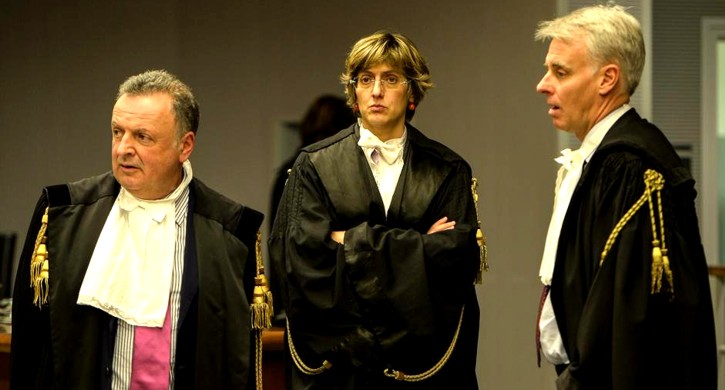
After these last sparkles and the knife waving Bongiorno’s performance was over. In the following day’s hearing it was Maori’s turn. As a really last resort, he was taking on the task of disputing evidence in a more “traditional” way, objecting to points of evidence.
Possibly this revealed even more the extreme weakness of the defensive argument (a commenter called it “˜pathetic’). I did not listen to his argument myself, I only notice that he did not get much space neither in the press nor in the pro-Knox commenting sites; this might be a clue of how unconvincing he might have been.
One thing that however I could learn about it, is about the feeling, the perception that Maori pointed out even more the separation between the two positions of Amanda Knox and Raffaele Sollecito.
A hint about this comes in the words of a journalist who was questioning Alessandro Nencini in the lounge immediately after the verdict: the journalist pointed out how Sollecito defence “tried to split the positions of the two accused”.
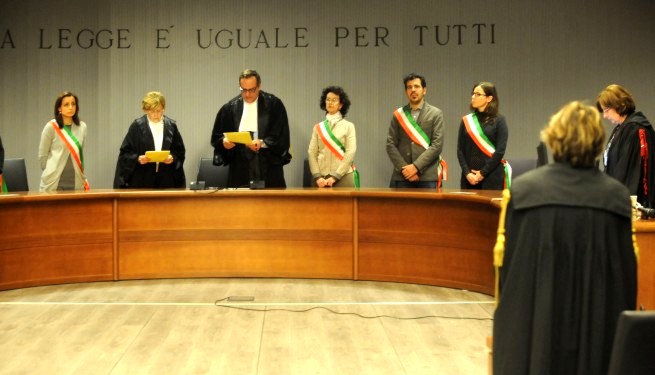
This mild attempt of a separation was the last act by the defence. As for Raffaele Sollecito himself, we were left with his rather different claim, his book where he described himself as sticking to a “˜honour bound’.
He reportedly bragged about this also with his ex-girlfriend Kelsey Kay, who described him as feeling very entitled because of his loyalty to Amanda Knox and believing she owes him a vital a favour; but Knox won’t even respond to his messages.
Then, we had his final admission in an interview that his friendship with Amanda Knox has “˜deteriorated’, because apparently Knox in practice no longer supports him as before.
If his defence advisors understood that they needed to somehow “˜separate’ his position from Knox’s at any cost, despite his plea, to suggest he may be implicated but just “˜less’ guilty, we may only agree with them on this. It would also be convenient for him to confess even if he shared the same degree of guilt of Knox.
Sadly, instead he still felt compelled to offer further lies and changing stories such as”˜I noticed no blood on the bathmat’ when questioned by Kate Couric; he offered again a story of pricking Meredith’s hand while cooking together at the cottage.
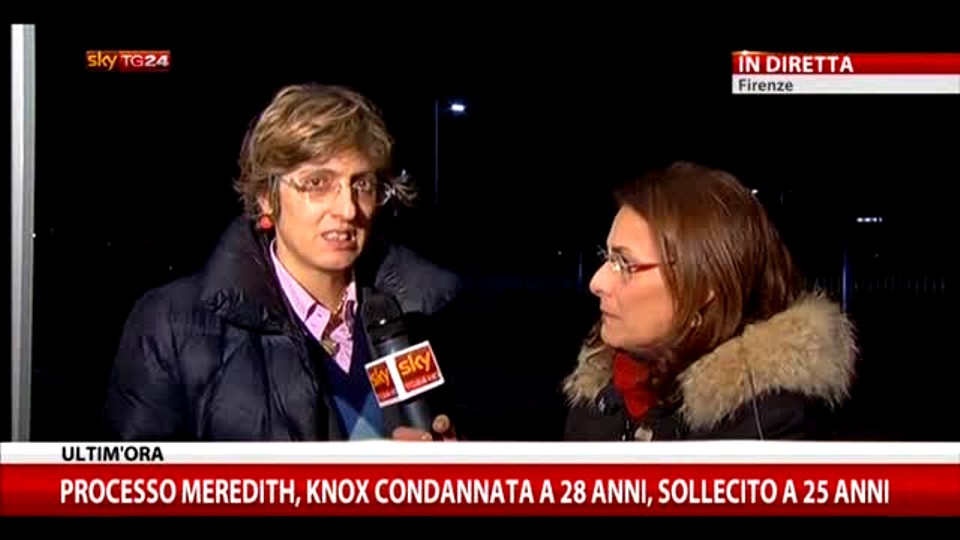
Other murderers, who committed even more heinous crimes, have recovered and rehabilitated themselves after time spent in prison; even some of those deemed among the worst serial killers managed to do this by expressing remorse ““ for example the rather psychopathic “˜Ludwig’ (Furlan & Abel) killers.
Sure after the years he will spend in jail for the gang-like crime he is found guilty of, there would be a possibility for a “˜casual murderer’ such as he is to be perceived as rehabilitated. But to see him as “˜less guilty’ or as “˜rehabilitated’ would be impossible as long as he remains silent or denies.
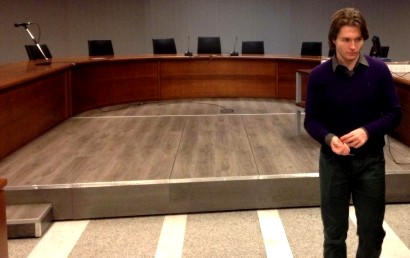
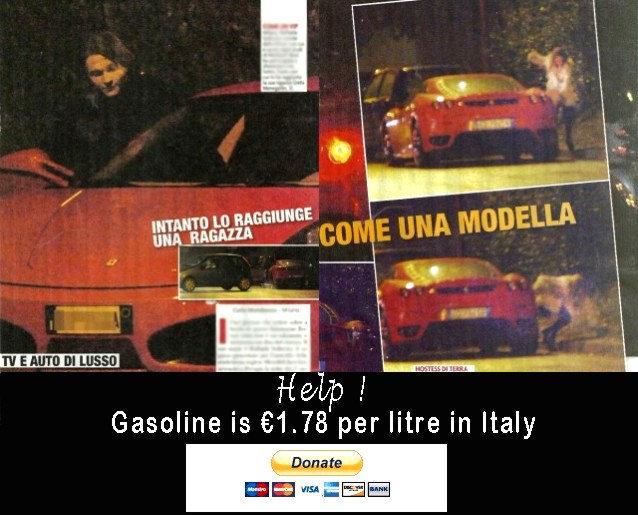
Monday, February 24, 2014
Power Shift In Italy Very Unfavorable To Anyone So Stupid As To Thumb Their Noses At Italian Justice
Posted by Peter Quennell
Meet 39-year-old Matteo Renzi
Mr Renzi was sworn in by the President of the Italian Republic on Saturday as the new Prime Minister of Italy. As a top German newssite remarks, he is looking like a much-needed breath of fresh air.
Mr Renzi is colorful and dynamic and very popular, and may become one of the most effective leaders in recent Italian history and a major player on the world stage. Mr Renzi comes from FLORENCE where he was the popular and effective mayor.
Unlike the Berlusconi faction in parliament (which once included Giulia Bongiorno) Mr Renzi is a big friend of law and order, police, and justice. In the image at bottom you can see him opening the huge Palace of Justice in Florence with all the top officers of the court who just organized the appeal.
This is very bad news for Sollecito and Knox and their foolish gangs, as Mr Renzi will be very unlikely to look kindly on that same Florence court - and any court in Italy including, especially, Cassation - being flouted by convicted perps and made to look weak.
If the new Minister of Justice sends an extradition request to his desk, you can bet that he’ll send it on to the United States. And the US, very keen to stay on good terms with Italy as one of its 2-3 most reliable allies, will exhibit little if any resistance to the extradition of Knox.
More bad news for Sollecito and Knox
The sardonic Italian media is paying very close attention to the ongoing game of each of them pushing the other closer to the flames, and the almost-certain prospect of the two of them and Rudy Guede explosively flying apart.
The Italian media is picking up on signs that Sollecito has become highly resentful at his on-again off-again rejection by Knox, especially as many or most in Italy believe it was Knox who wielded the big knife that killed Meredith to which the other two had maybe not signed on in advance.
There are additional pressures headed down the pike. First, Rudy Guede will be given brief study leaves soon, and under Italy’s new “clear the over-crowded prisons (somewhat)” law Guede could even soon see himself released and free to talk.
Plus the investigators examining the criminal defamation of the justice system and officers of the court by Knox and Sollecito in their exceptionally foolish books are believed very close to announcing that a case against them has been made.
Sollecito’s father on national TV has already admitted that Raffaele lied about a deal to get him off, and this on Knox seems an open & shut case. Knox and Sollecito might face additional sentences of 3 to 7 years if they keep provoking a hard line.
Here are two articles translated by Miriam which summarise (not perfectly in our terms but good enough) the signs of the growing divide and the evidence that will see Knox and Sollecito back in prison.
Amanda Knox Will Return to Italy and Go to Jail, as Will Raffaele Sollecito, While Rudy Guede Will Be Freed
This scenario is not only plausible, but seems to be the natural outcome of the last sentencing of the Mez case. Few believe that the Corte di Cassazione could overturn, again, the verdict of the Corte d’Assise d’Appello of Florence.
So Amanda Knox will return to Italy and go to jail. For Amanda Knox, “her extradition is quite possible” Christopher Blakesely say without equivocation. He is one of the main experts on such penal proceeding in the United States.
The day after the verdict of the Corte d’Assise d’Appello of Florence, Giovanna Botteri, the RAI correspondent in the USA, reported something similar, underlining that Amanda rushed to CNN to cry all her tears didnt help.
Knox uses even the social networks to scream again her innocence, but the law says something different.
Even Italian popular opinion seems not in Amanda’s favor : Perugia, through the social networks, has literally screamed its disagreement and displeasure against Amanda (read: L’Urlo di Perugia: a Facebook page against Knox: from the people of Perugia)....
Rudy is at the moment the only one sentenced in jail…. How does Rudy reconstruct that night? Rudy swears to having consensual sex with Mez.
After the intimate relation Guede went to the bathroom and from there he heard her scream, rushing to her room he found her in a pool of blood, and tried to help her. Realizing that Meredith was dead, in shock he ran away.
On the plausibility of this reconstruction, the judges had numerous doubts, to the point of finding Guede guilty and sentencing him.
This reconstruction, according to his lawyers, explains not only the biological traces of Rudy all over the crime scene but also his flight.
How does Amanda reconstruct that night?
Amanda continues to sustain that she did not wield the knife that killed Mez, that she heard her scream while she was in the kitchen and that she covered her ears like a scared child.
The “whys” are many and heavy. Why did Amanda accused Patrick Lumumba, incarcerated for 14 days while innocent, due to her ignominious accusations? Why on the knife used for the murder are there traces of Mez and Amanda?
Knox DNA was on the handle of the knife that killed Meredith: only because she used it to cut potatoes? The alibi of the potato has always been used by Knox and her lawyers, but it is plausible?
And Raffaele Sollecito?
One of the most decisive evidence against Sollecito in the first trial was the bloody foot print on the bathroom math. In the appeal process that footprint was challenged, it was said that it could be not Sollecito’s and was ascribed to Guede with benefit of doubt .
Now it seems certain that Rudy was wearing shoes ,as is demonstrated by other prints at the scene of the crime, thus the bloody footprint goes back to being ascribed to Sollecito.
Why is Rudy Guede in jail while Amanda and Raffaele are on the loose?
After the verdict of the Corte d’Assise d’Appello of Florence the appeal to the Cassazione, was announced, while waiting for the Cassazione, the guilty Raffaele Sollecito had to hand over his passport in order to make it impossible for him to leave Italy.
Right after the sentence Sollecito was stopped in Udine about 60km from the Italy/Austrian border and about 40km from the Slovenian border.
Before the verdict of Corte D’Assise d’Appello of Florence Sollecito was a free man, and therefore legally in possession of a passport and the right to cross the border.
Sollecito, instead of waiting for the verdict in the court room, around 12 o’clock that day left with his new girlfriend and arrived in Udine [in north-east Ital]..
Around night time during a snow storm the two of them took refuge in an hotel , and the owner recognizing Sollecito by name, alerted the police that promptly arrived in order to confiscate Sollecito’s passport as decided by the Court.
Sollecito told the media that he had no intention of fleeing the Country.
One can ask what Sollecito was doing in Udine then, a few hours after his guilty verdict. To excuse Sollecito one can perhaps say that the young man was overpowered by anguish and fear, in fact up to today
Sollecito had never seemed to want to evade justice, instead he was usually in the Courtroom.
Amanda in contrast was not sanctioned with any precautionary measures. She arrived in America as a free citizen after the not guilty verdict.
Now, if and when the Cassazione confirms the verdict of the last proceeding, America needs to extradite Amanda and remit her in the hands of the Italian Justice…
America is tied to Italy by sanction accords by name of international laws, thus if the Cassazione upholds the guilty verdict, Amanda must return to Italy. Nothing makes one think that America could oppose an extradition.
Rudy Guede is the only guilty one in jail at the moment. His detention was confirmed after a fast track trial, decided by his layers, and his detention was 16 years in jail. (with time off for the fast track trial)
Not many know that while the doors of the prison may soon open for Amanda and Raffaele,, for Rudy instead “freedom” may be close by.
Thanks to the new decree passed last December by the Parliament, Rudy could leave the prison where he is detained. Guede is one of 3 thousand detainees who could benefit from the “empty the prisons” decree.
Raffaele Sollecito and Amanda Knox are close to a break up after the sentencing..
Raffaele wrote Amanda a letter saying: “Amanda I am tired. I don’t want to be punished, neither do I want to continue to give justifications for matters that concern you and not me”.
Amanda says “I understand him but: I want to say that Raffaele is not my slave and I am not his oppressor. Raffaele has many reasons to be resentful, but not with me.”
The bond between the two, accused of the homicide of Meredith Kercher, is cracking. A bond that lasted from that horrible night of November1st 2007, when in a house in Perugia, via della Pergola, their English friend was savagely killed.
Looking at a concrete possibility that the Judges of the Cassazione will confirm the sentencing which condemned Amanda and Raffaele to 28 years of jail for her and 26 for him, the two ex-lovers are starting to distance themselves from each other.
Amanda took a picture of herself holding a sign that read “we are innocent” so as to underline a common faith, from which Raffaele can’t dissociate. Not anymore.
Raffaele after six years may be starting to understand that being Amanda’s “fiancé” did not help him at all. He said this to Giulio, in an interview a few months ago, and now in an interview to CNN:
In the Judges head I must be guilty because I was Amanda’s boy-friend. It does not make any sense for me. According to the Judges because in some way I supported Amanda, I must be implicated. According to me this is aberrant. My standing has not been just ignored, but completely forgotten. In all the proceedings I was not part of them unless for the scientific investigations.
For many, many hearings the topic was my DNA, but nobody said nothing of the reason why I was accused of the homicide except the fact that I was Amanda’s boy-friend and because I was with her very often and spent many nights with her, I had to be in some way connected with the homicide.
Is Raffaele’s defense thinking of ditching the girl? Is Raffaele ready to tell the truth of what happened that night? Now Raffaele is in Bari, and is thinking over what happened to him. He reveals:
I discussed with my friends and family the possibility of going abroad a year ago, but I cannot accept the fact of leaving all the people who are dear to me for a theory. I had no motive to hurt Meredith Kercher.
Now I have no light in my future. They took away my passport and I.D. card, and I do not know if I can realize my dreams, or anything I want to do. I do not accept that my future is destroyed.
Too often, though, Amanda and Raffaele forget to mention that Meredith’s life really was destroyed.
Against Amanda and Raffaele there are scientific evidence, bloody footprints on the floor, DNA on the bra clasp and knife, and the many contradictions in their alibis.
From the beginning their behavior caused the carabinieri to be suspicious of them.
Without forgetting the spontaneous confession of Amanda of being in the house while her friend was being murdered. “I have a vision of being in the kitchen, covering my ears while they kill her.” She even gave the name of the killer Patrick Lumumba, her boss, who was then discovered to be innocent.
The attempt to divert the investigation, pointing the finger against an innocent man, is evidence of the quilt of Amanda.
Even Raffaele changed versions more than once. In one of the interrogations he said Amanda was not with him that night and arrived at his apartment in the early hours of the morning. He then said he smoked too much marijuana and could not recall what happened that night.
In the meantime Rudy Guede, 27 years old, condemned to 16 years for the murder of Meredith Kercher, with others, writes:
Now that my verdict is definite, for too long the judicial reasoning have been subjected to a continuous and willful manipulation and alteration of the data of the proceedings… I would like to point out that I do not accept being labeled as a homeless man, drifter, and a thief; when instead I had a splendid family and precious and clean friendships in Perugia.
Amanda Knox’s defense team wants to pass him off as a habitual thief. Rudy adds: ” “Meredith’s house was turned upside down, someone simulated a break in. I was not condemned for this simulated break-in.”
If it was not Rudy, then who?
Wednesday, February 19, 2014
Our Reviews Of The Painstaking BBC-3 Report First Aired In The UK On 17 February 2014
Posted by Our Main Posters
Review by SomeAlibi
Watching “Is Amanda Knox Guilty” was a funny thing. I suspect for people following the case closely, on either side, it was a sobering experience. Not because it changed perspectives, but simply to see how quickly one hour passed and the necessary trade offs that had to be made to fit within that schedule. The opportunity cost was a level of detail to which in-depth followers have become accustomed.
Just one example: Sollecito and Knox’s partial alibi that they were checking their emails on the night of November 1st was explained as being challenged by two broken computers. Perhaps, (although unlikely to be the material issue) but where was the much more salient fact that their ISP records showed that was conclusively untrue? Where was the challenge: if you say you’re checking emails to establish part of your alibi against a murder and it is shown to be absolutely untrue, what does that suggest…?
There were many other “clinchers” that had to be let go in the name of brevity. But it wasn’t that sort of documentary - it was neither a case for the prosecution or a case for the defence: it put the main suggestions at the level of detail that was possible and it allowed both sides to speak to the points at that level of detail.
I find it interesting that there has been such a howl of bias from those supporting Knox and Sollecito. Objectively there’s no good ground for it: the documentary allowed both sides forward in equal measure and no pro-justice watcher would celebrate it as a pro-conviction piece.
The arguments were balanced, the video, audio and picture quality eye-opening. For those on the other side, their markedly different reaction appears to be that the documentary has broken the taboo that The Evidence Shall Not be Told. The idea that there is an easy-to-consume piece that puts forth the case and defence equally is seen as a disaster.
The campaign for Knox continues to be obsessed, beyond all things, with trying but now failing to make sure the public doesn’t know the basis of the case. For a long time they hoped to drown out the multitude of terribly inconvenient truths within it by screaming “no evidence”. ‘Is Amanda Knox Guilty’ put the lie to that conclusively, but fairly, and now many hundreds of thousands, perhaps soon to be millions will ask themselves why those supporting Knox and Sollecito have had to adopt this tactic at all.
If they really are innocent, why has the case against them been so comprehensively white-washed in the US?
The conclusion, is rather simple and I saw it encapsulated on a large television screen last night with the repeated clips of Amanda Knox and Raffaele Sollecito outside the cottage kissing and “comforting” each other: there for a fraction of a second, shown several times, is Amanda Knox, unable to stop herself glancing at the camera filming her and stealing her gaze away again very quickly pretending she hasn’t.
It’s a look that says everything: furtive, pretending it didn’t happen, immediately covering up in a way that poses a stark proposition: why on earth would you do that if you had nothing to hide? And like so much of the multiple collapsing alibis and non-working answers and the desperately dishonest fingers-in-the-ear “no-evidence” pretence of those supporting her, is a proposition that can withstand no scrutiny.
Review by SeekingUnderstanding
What a relief to watch a very clear and unbiased narrative. The quality of the visual information was top rate - seeing so much original footage, and presented as it was in a logical time sequence.
Even though I was already familiar with the evidence, including the photographic material, I found it very helpful to see it all presented in this way. I appreciated, too, hearing and seeing the excerpts in original Italian (along with English translations). It added even more authenticity.
I hope that, at long last, this will have helped some - or hopefully many- people to see that the two ‘camps’ in this case do not divide into AK supporters and AK ‘haters’. There are the FoA and their followers ...and there are the others who seek the objective truth and justice.
If hate has been generated in some quarters, then the Knox (and Sollecito) camps need to look to themselves and their own behaviour. This programme was important in the tone it set.
I actually found it to be quite lenient towards the defence on a number of counts.
There were several instances where the defence point of view could have been strongly countered by known and established facts, but, bending over in fairness, these were left unanswered.
Here are just four instances :
1) In the discussion around the blood and DNA left in the bathroom - Dr. Gino’s assertion that ‘the blood/DNA ‘could have come from anywhere’ might have been countered with AK’s own declaration that the bathroom was previously clean. Dr. Gino also suggested a very improbable scenario of ‘it could be saliva’ (on the bidet?). Cassation emphatically said that it must be shown HOW any suggested contamination could have occurred.
2) There was a missed opportunity in discussing the knife presumed to be the murder weapon to mention Sollecito’s lame, unreal excuse of ‘Meredith pricked her hand’ etc.
3) Anne Bremner stated ‘Amanda could not have turned overnight…into a murderer’. Attention could have been drawn to many things, both physical events (her predilection for cruel pranks, including a staged burglary in the US, and wild parties, etc), and also many psychological indicators that would have clearly shown how her behaviour has, in fact, demonstrated consistency.
4) In the discussion re the bra clasp, the delay partially being caused by the defence themselves was not mentioned. Also, detailed discussion re the one bare footprint on the bathmat was omitted.
Since there is, in fact, so much evidence, it must have been difficult to chose and balance what did go into the hour long programme. All in all, I feel Andrea Vogt and her team worked hard, and did very well to let the facts speak for themselves.
I hope it will lay a few fictions and myths to rest.
Review by Earthling
What is the “Amanda Knox trial” (really the Meredith Kercher murder trial) really about? Is it about an innocent 20-year-old pretty white girl being railroaded by the medieval Italian justice system?
Or is this actually a murder trial, about the fact that a beautiful, intelligent, ambitious young woman, innocently trying to improve her life by study abroad, was brutally murdered?
I believe it’s the latter, and the BBC3 production gives us one of the first truly balanced reports on this trial.
The filmmaker starts from the beginning, and takes us through the murder, investigation, and various trials and appeals up to the present day. Instead of the breathless “Perils of Penelope” tone (toward Amanda Knox) that most such previous “documentaries” have taken, this one takes a sober look at the actual evidence.
Did you realize that there are luminol-revealed bare footprints in Knox’s size in the apartment? Luminol reveals blood and a few other substances; but those substances can be ruled out because the test was done six weeks after the murder, by which time those substances would have dissipated.
Blood doesn’t dissipate. This documentary shows you those bloody footprints in all their creepy glory, something never shown on American TV before.
“Is Amanda Knox Guilty” also speaks of the actual DNA evidence in the cottage linking Knox to the murder, including five mixed-DNA spots (Knox and Kercher) that tested positive for blood. Both prosecution- and defense-oriented experts are allowed to comment on this evidence, and the viewer is allowed to make up his or her own mind.
My one criticism is that a lot of the evidence against Knox (witness statements, cell phone data, fake break-in) is skimmed over or not even mentioned. Also, because the documentary quotes Rudy Guede’s position at length without any contradictory narrative, it is confusing as to whether the filmmaker might have believed him.
In the end, the filmmaker says, he was convicted of participating in the group murder. However, a stronger statement against his “I’m entirely innocent” defense would have been good.
Other than these quibbles, this is the best documentary on the Meredith Kercher murder case that I have ever seen.
Review by ZiaK
I watched the BBC programme on the Meredith Kercher case hoping for a more balanced view of the case than has been presented in the English-speaking media to date.
The documentary does present some of the evidence against Knox and Sollecito - including the bloody footprints, the mixed blood/DNA traces in the bathroom and corridor, the bra clasp, the knife DNA evidence, the strange timings of phone calls to police, the unlikelihood of the “break-in” being anything other than staged - but omits to point out that none of the other flatmates’ DNA was found in the blood traces, so saying that “it’s because Meredith and Amanda shared a flat” is misleading.
Nor does it point out that, although the murder knife was found in Sollecito’s flat, none of HIS DNA was found on it: it had only Amanda’s and Meredith’s DNA.
The programme didn’t cover the cell-phone evidence, showing that neither Knox nor Sollecito were where they said they were, at the times that they claimed. The programme also repeated the “Friends of Amanda” PR soundbites, such as “there was no evidence of Amanda in the murder room” - whereas the fact that her footsteps tracked blood OUT of the room are actually evidence of her having been present IN the room before it was locked (i.e. at the time of the murder).
Furthermore, in my opinion, the narrator’s voice seemed to evince sympathy towards Amanda, rather than describing events with a passive or objective tone of voice.
As one of the translators who has participated in translating case documents (such as the judges’ reports describing why they came to their decisions), I am only too aware of the extent of evidence against Knox and Sollecito, and I would like to see knowledge of this evidence become more widespread throughout the English-speaking world.
The BBC programme is a step towards this, but in my mind, only a very small step. I hope the pace will pick up soon, and more objective and extensive knowledge of the true facts of this case will be made available to everyone so they can form a rational opinion of the case based on true understanding.
Review by Cynthia
I’ve just watched this, and it’s very good - with a huge amount of footage hitherto unseen (directed by Andrea Vogt).
For what it’s worth, I note the following points:
1) There’s no mention of Meredith’s friends who heard Amanda say ‘she fucking bled to death’ before the fact was known to anyone else. Perhaps they didn’t testify, being too distressed? If so, it’s a great pity, because it seems a veritable clincher that hasn’t been used at all.
2) The bra DNA arguments are quite extraordinary. If we can determine that we all have Neanderthal DNA (tho’ I know a lot of American fundamentalists don’t believe that mankind goes back more than 6,000 years!) I can’t for the life of me see why DNA would be unusable after a poxy delay of 12 days ...
3) The argument that the Luminol traces may indicate not barefoot treading in blood but in bleach seems absolutely unbelievable to anyone who does housework (like me!) Bleach is horrible stuff, and you really, really don’t want to be getting it on your bare skin. Even Amanda, with her vestigial domestic skills, would have noticed if she’d trodden in it.
4) Bremner says Amanda was an honor student. She wasn’t; she had funded herself (not that that’s discreditable). (Also, are honor students unable to write cursive script? The shots of her handwriting show that she can’t do joined-up writing. [Or thinking.] I don’t know whether the phrase exists in American English, but not doing joined-up writing is a term of great intellectual contempt in English.)
5) We saw Amanda’s ‘mask’ speech. This is really interesting - who would even think that masks were being put on them if they weren’t using them themselves?
6) The programme mentions the little-reported fact that another, smaller knife found at Sollecito’s also had Meredith’s DNA on it.
7) The film omits to mention Hellman’s lack of any experience in criminal trials.
8) Every shot of Amanda in the film has her talking about ‘me’ and ‘I’. She never, ever mentions Meredith - it’s all about HER suffering. She never even says ‘the murderer is out there - I wish you’d stop persecuting me and get them’.
Presumably this is because Guede is supposed to be the sole murderer - and nobody seems in the slightest bit worried that there’s no murder weapon with HIS DNA on it! (Yes, there are his turds - but that wasn’t what killed Meredith.)
9) FOA has used the fact that the recent jury took 12 hours to deliberate over the verdict as an indication that they couldn’t agree. But why not just that they were being extremely careful and re-examining everything?
10) Finally, just an observation: Maresca speaks the most beautiful Italian - you can hear every word calmly flowing past.
Review by Miriam
Much appreciated. Outside of the Porta a Porta transmissions on the case, the best I’ve seen.
I understand they had to give both sides, but I felt that the defense came out on the losing side. I thought it funny that it was implied that since they only tested for blood it could of been saliva.
I don’t believe even her supporters would argue that Knox was so quirky as to brush her teeth in the bidet! Or maybe she spit in the bidet, in which case Meredith would have had every reason to complain about her bathroom habits!
Now if only this or something like this would air in the U.S.
Review by Sara
This is actually one of the most objective and well-researched reports I have seen on the case and I am very happy that BBC has managed to be so unbiased.
It presents both sides of the story equally well and does an excellent job of countering the extremely silly “no evidence” argument that the FOAkers like to repeat at equal intervals.
Regardless of what one believes, I think the documentary will at least succeed in convincing most people that there is indeed sufficient evidence against the two of them, and Italy’s judicial system is not crazy to convict people without any evidence.
My favourite part was when the defense DNA expert (can’t recall her name) tried to explain away the mixed blood evidence by saying that one of them could have had a nose bleed, and the other could have cut her hand in the same place leading to mixed blood.
Come on already, what are we? Kindergartens making excuses for not handing in homework? What is the possibility that both of them would bleed in exactly the same places not once or twice but multiple times? I think anyone with a bit of sense can see that they are clutching at straws.
However, I was a bit disappointed that few things were missed out. For instance, the fact that Guede’s footprints led straight out of the house, the fact that Amanda’s lamp was found without any obvious reason in Meredith’s room, Amanda’s extremely odd midnight call to her mom that she conveniently “forgot”, her million showers despite her concern towards “water conservation” etc.
Sollecito’s multiple changing stories were not really elaborated upon (the story in which he went to a party, the one in which he checked emails, the one in which he pricked Meredith etc etc).
Also, inconsistencies between their accounts of various events could have been pointed out (Was Filomena’s door open or close? Did AK call Filomena from the cottage or from Sollecito’s house? etc).
Witness accounts were not given any screen space either. I think touching upon these would have made the documentary even more impressive.
That said, I understand that the team has done the best they would within the limited time they had, and everything just cannot be accommodated within one hour.
So, all in all, kudos to the team and BBC for a job well done.
Review by Odysseus
I though it was a very competent overview of the case. After so much pro-defendant spin in the MSM (no doubt engineered by the American defendant’s PR outfit), it was refreshing to have a sane, measured and rational presentation. The victim deserves no less.
Congratulations to BBC3 and to the programme makers. It’s good to know that the BBC of blessed memory hasn’t been entirely dumbed-down nor intimidated by “partial outside interests”, the latter being director Andrea Vogt’s own description of the forces intent on muddying the waters in this case.
Tuesday, February 18, 2014
Congratulations To The BBC For A Report Emphasizing The Sheer Extensiveness Of The Evidence
Posted by Our Main Posters
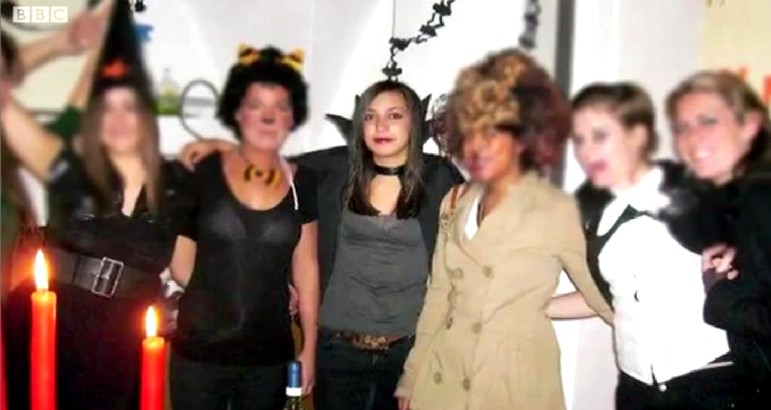
[From the BBC report: Meredith the night before the cruel, deadly attack with her Halloween friends]
This is the painstaking and obviously expensive report by Andrea Vogt and Paul Russell with interviews in London, Seattle and Perugia.
It was aired by the BBC on 17 February. Considerable time is allocated to defense lawyers and experts and the Knox family and Ann Bremner of the FOA taking their best shots at explaining how Knox could maybe have not been involved.
Still, the sheer mass of the evidence remains as the 80,000 pound elephant in the room, lacking any hint of a realistic alternative explanation. Three people committed the horrific attack, including Rudy Guede and two others.
Only Knox and Sollecito remain pointed to by dozens of evidence points as those two others. Not one single evidence point indicates anyone else was involved. The Masssei trial court got it right as the Nencini appeal court just confirmed.
We will enquire if we can embed the hour-long video. But as it may be picked up by US and other foreign media outlets, we will start by simply summarizing it soon. Assessents by those who have already seen it are welcomed.
Friday, February 14, 2014
Hard Questions By Italian Journalist Giuseppe Castellini For Sollecito
Posted by Peter Quennell
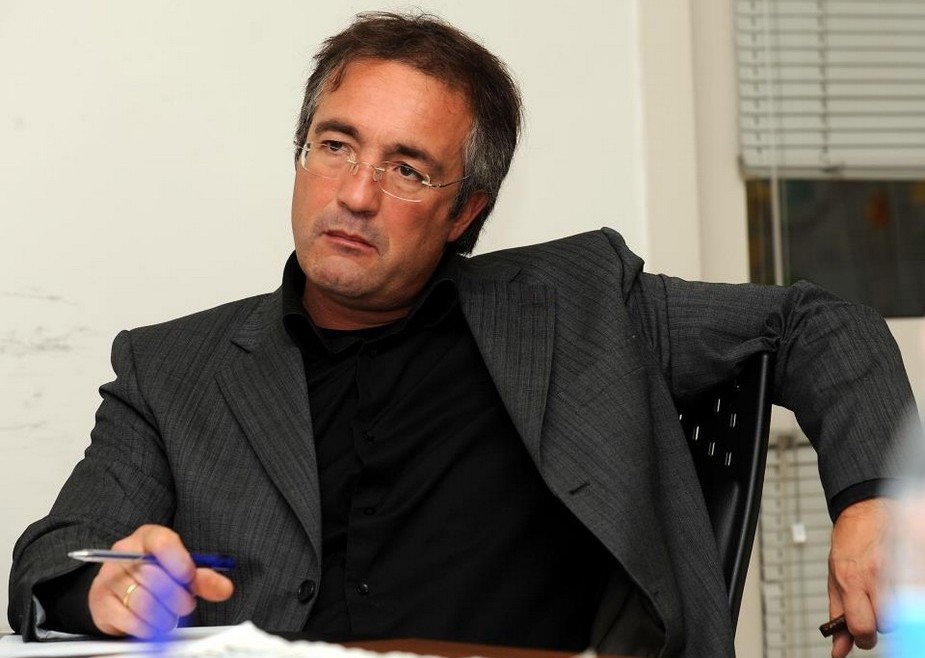
[Above: Giuseppe Castellini of Giornale dell Umbria has long exposed the Knox/Sollecito lies]
1. Overview Of Italian Media Takes
The fast-growing satires of Knox and Sollecito in Italy described in our previous post are not just emerging in a vacuum.
The many tough crime-show comperes and crime reporters in Italy have rarely let Knox or Sollecito get away with any of their lies. One example was when Bruno Vespa, the host of Porta a Porta, Italy’s most popular crime show, forced Francesco Sollecito to admit to Italy that his son lied extensively in Honor Bound. Another example is when Oggi published some of Knox’s lies and they were rapidly exposed. For seemingly endorsing Knox’s lies Oggi will face trial for obstruction of justice.
There are countless other examples where Sollecito and Knox have been exposed as liars. The super-sharp editor of the Giornale dell Umbria, Giuseppe Castellini, has just published this challenge to Sollecito who had absurdly had claimed that nobody ever wanted to ask him any questions in court.
2. Giuseppe Castellini Questions RS
The translation is by Miriam.
Murder of Meredith: a few questions for Raffaele Sollecito
Raffaele Sollecito, found guilty and condemned to 25 years by the Appeals Court of Florence, for the murder of the English student Meredith Kercher (for the same crime Amanda Knox was also found guilty and Rudy Guede is already serving a definite sentence of 16 years) has stated that he was never questioned in court, because no one ever asked him.
For the record and in order to have a complete picture at, it should be remembered that during the investigation, Sollecito twice took advantage of his right to not respond to the questions of the PM Mignini.
So if it’s true that the prosecutors, in all the trials never asked to question him in court, neither did he ask to be, limiting himself to giving several times making spontaneous statements, without being cross examined.
However, this is not the real point. The fact is that Raffaele could not or did not want to respond to the questions of the investigators.
His version was always brought forth in detail by his lawyers, obviously, but that is not the same thing.
Important questions remain to which Raffaele did not answer directly during cross examination by the Prosecutors. Let’s try to summarize some crucial unanswered ones. Who knows if Raffaele will ever decide to respond in detail right here on these pages even though ““ at the moment ““ it seems improbable. We address him directly, sure that he reads these pages.
1. The first time that you were questioned in Questura you said that the first of November 2007 (Meredith was murdered the night between the first and the second of November) after a walk through downtown Perugia (before that you and Amanda have been in the house in via della Pergola). You came home around 08.00pm while Amanda come back much later around 01.00am, you then changed your version saying that you had always been together. Your first statement seem like a distancing from Amanda, in those hours nobody knows what she did, while the second one has a complete different flavor. Why did you radically changed your version?
2. It’s proved by the findings (even if your lawyers contested it) that the computer in your house was activated for about half an hour from 05.32am till little after 06.00am of the second of November. For the experts of the Police it was certainly a human interaction. You, instead declare that you and Amanda were sleeping. So who was it then that was using your PC at that hour?
3. Your and Amanda’s cell phones were turned off at the same time around 08.40pm of the first of November and they were turned on, practically at the same time, a little after 06.00am of the second of November (at that time you received the “good night” sms sent from your father the night before). How do you explain all this?
4. You stated that you were not in the house in via della Pergola. How it is possible that your DNA is on the bra clasp (17 loci that shows your genetic profile, and for the father of Italian genetics, Prof. Vescovi, that with the current processes are not only enough, but more than enough to match your DNA). And why did luminol revealed a bare right foot print compatible with yours, in addition to the one on the bathmat in the small bathroom? (the size of the big toe, just to point out one thing, is just like yours, while Rudy’s is a lot smaller).
5. Why, if Rudy was the only assassin, in the corridor would he cancel only the bare foot prints, leaving in plain sight always his, but left with the shoe print of his left foot? Doesn’t it come to mind that whoever cleaned up the prints thought to cancel theirs (specifically the ones ascribed to you and Amanda) leaving behind those recognizable as Rudy’s?
6. You and Amanda were seen by the homeless Antonio Curatolo late the night of the murder and Amanda was seen by the shopkeeper ““ that knew you well and already saw you with Amanda ““ enter in the shop at about 07.45am to buy something and go back toward piazza Grimana. You and Amanda say that at that hour you were sleeping in your house. Is there something that can demonstrate this, that up to now has slipped away and that would give you the missing alibi?
3. Questions For RS Of Our Own
We have advanced plenty of questions for the evasive Sollecito of our own. Here are seven examples.
- Questions For Sollecito Do You Stand By Your Smear Of Reasonable Doubt In Italian Law?
- Questions For Sollecito Why Claim Guede Did It Alone When Vast Evidence Contradicts That?
- Questions For Sollecito Why So Many Contradictory Explanations Of How DNA Got On The Knife?
- Questions For Sollecito Did Your Father & Lawyers Pre-Approve This Crazed Rant?
- Questions For Sollecito Can You Realistically Account For The Hard Evidence On The Bathroom Mat?
- Questions For Sollecito Katie Couric, Push Back Against Sollecito’s Bluster And False Facts #2
- Questions For Sollecito Katie Couric, Push Back Against Sollecito’s Bluster And False Facts #1
Wednesday, February 12, 2014
In Italy The Faux Self Pity Of Knox And Sollecito Is Increasingly Becoming A National Joke
Posted by Peter Quennell
Meet Amanda Knox the Perugian Chipmunk version.
Knox’s Facebook page is also being satirised and ridiculed (one message there reads “Perugia Hates You”.) Some may actually believe the rumor that Knox is shopping herself around for salacious movies.
Sollecito being nabbed at the Austrian border because of a quick tip to the police also inspired sarcastic humor in Italy, and several journalists have come up with questions to challenge Sollecito when he gets on the stand, as he so desperately wants or says he does.
We expect some more Italian satire (and maybe not only Italian) and will report on that as well, as this long-needed and much-deserved hit-back against dishonest pandering to media audiences could prove an important trend.
If satire proves the way to stop RS and AK babbling lies daily about the case and Italian justice via every craven media outlet, then well done Italy!! Nothing else seems to work to shut the two up, although their false claims and smears could constitute obstruction of justice.
If Knox and Sollecito want to avoid being spoofed, they have two very easy ways to do so: (1) shut up and avoid the media, or (2) stick to telling the truth.
Tuesday, February 11, 2014
The Much-Demonized Rudy Guede Is Back In The News And Increasingly Threatening
Posted by Peter Quennell
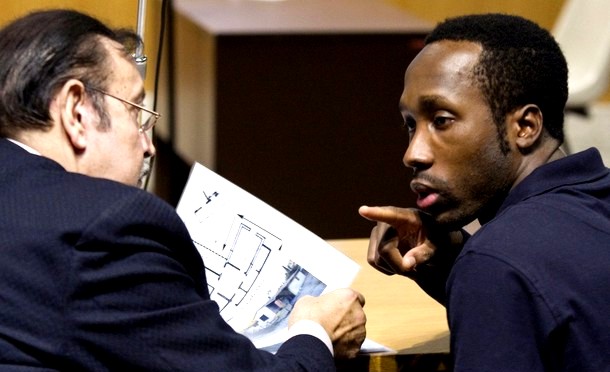
Rudy Guede has long DELIBERATELY been demonized so that the attack on Meredith can be assigned to him alone.
This description of Guede’s early days in the Ivory Coast and Perugia in the excellent Darkness Descending by Paul Russell and Graham Johnson remains the ONLY one that fully checks out. Certainly not that by the dishonest PR shill Nina Burleigh.
Guede wasn’t especially an angel, and some in Perugia were iffy about him. But he had real friends, and up north he held a real job with a real career future, until that prospect imploded and sent him haplessly back to Perugia.
Late in October 2008 Judge Micheli discounted all that Guede ever said about his role in the attack on Meredith in various conversations and statements, and sentenced Guede to 30 years.
But Judge Micheli also concluded that there was no firm evidence either that Guede acted alone or that Guede was a drifter, drug dealer, knife wielder or burglar (Micheli was very sharp with one witness who claimed Guede may - may - have broken into his house).
In 2009 through his lawyers Guede enquired of the prosecution whether he might testify at the Knox-Sollecito trial.
But the prosecutions’ hands were already tied by the indictments and they (rightly) believed they had a really strong case regardless of anything Guede could add.
At the 2009 trial the defenses pussyfooted around and never settled for a firm position on Guede. They floundered in their subdued attempts to prove that Guede or somebody else unknown was the so-called Lone Wolf.
The Lone Wolf theory is really a zombie theory with so many stakes through its heart that no court will ever take it seriously.
Guede’s steadfast fallback position before and since was that he was only in the house on the night of the attack because Meredith invited him to come in and they began love-making.
At his late-2009 first appeal and also at Sollecito’s and Knox’s 2011 appeal before Judge Hellmann, he increasingly firmly pointed the finger at Knox and Sollecito as the murderers.
Guede had been initially inclined to let sleeping dogs lie after he was mysteriously beaten up in the sex offenders wing of Viterbo prison, where prisoners are meant to be kept very safe.
But Judge Massei’s scenario of the attack on Meredith in his March 2010 Sentencing Report, with Rudy Guede as the lead instigator, really bothered him.
And in mid 2010 he became even more bothered when claims were made by a fellow prisoner the baby killer Mario Alessi that Guede confided that he really had committed the murder, along with two others. Not with Knox and Sollecito.
A very angry Rudy Guede in turn wrote a letter denying this which very rapidly went public.
In 2011 there was a tense confrontation in the Hellmann court (which several times descended into chaos) when this letter, in which by now Guede firmly accuses Knox and Sollecito, was read out for him.
Guede stuck to this position on the stand, and he was not required to face full cross-examination by the shrill, frustrated defenses because he was already convicted and no longer the one on trial.
Seemingly fed up with all the dirty tricks against him and the now-incessant Knox and Sollecito mantras in the media that Guede had acted alone, he has come out with another letter.
Italy’s AGI News Service has posted this letter to an unidentified recipient, along with this report.
(AGI) Perugia, February 11 “Against me are being repeated false imaginated reconstructions of the crime for the sole purpose of wanting to denigrate my figure and person, systematically and in a negative way, in the public eye and not just in Italy.”
He apparently also posted what he wrote in his own hand on the Facebook page “Legal processes and their surroundings”...
The letter is on a sheet of notebook paper handwritten and signed by Guede.
“To my regret I am again forced to take a pen and paper and write for the sake of the truth.. to all those thousands of people who still believe in justice.”
“They can not access all the pleadings and components of this sad and extremely complex legal case which was dramatically painful for those who lived it . My sentence and judicial reasoning have been for too long subject to a continuous and willful manipulation and alteration of the data of the proceedings.”
“Against me are made continuous false and imaginary reconstructions for the sole purpose of wanting to denigrate my figure and person, systematically and in a negative way in the public eye and not just the Italian.”
“In the final judgment, as far as I’m concerned about these false and imaginative reconstructions, is that I was acquitted of theft and simulation of crime, a fact that I never hear mentioned in the various journalistic reconstructions.”
“I also want to point out I do not accept in any way to be passed off and continually held up as a drifter, a thief, a homeless man, seeing my person and my dignity offended continually, denigrated and stereotyped by facts and things that do not realte to me… when I had a beautiful family and precious squeaky clean and friendly relations in Perugia.”
Fast-forward to today, where reports say that Guede is getting close to day-release for study purposes and may only be months away from making more evidence against Sollecito and Knox public.
Our posting lawyer TomM has looked at the issue of Guede being allowed out to study, and finds it regular and humane in this assessment.
I respect the Italian system of criminal justice. Just as I recognize that the Italian courts have much better information than anyone posting on the internet relating to the culpability of the defendants in this case, I also think that the people who oversee Guede’s stay in prison are better informed as to his fitness to be reintegrated into society. That he would be allowed out during work days to become better educated, returning to his prison cell at the end of the day seems to me a more enlightened approach than what we do here.
We used to have training programs in prisons. I don’t know that they were “cushy”, but they did work, so that when these convicts were released they were equipped with a marketable skill and rarely re-offended. But, the public thinks these were too cushy, so more Draconian circumstances and longer sentences are now the norm. It used to be people were sent to prison as punishment, now they are sent for punishment.
Sometimes when a prisoner who has spent his or her entire adult life in prison completes the sentence imposed, they have to be physically dragged from their cells, so ill-prepared are they for anything other than doing time. With no skills, social or job-related, they re-offend—surprise, surprise. Sometimes re-offense is for the purpose of being returned a world that, for all its dangers is, to them, relative safety.
While it is certainly true that prison doesn’t have much impact on sociopaths, the one thing they are attached to is money. Taking away their money does impact their behavior, so there is an alternative to killing them.
Friday, February 07, 2014
The Hubristic, Meanspirited PR Campaign: What Sort Of Life Has It Left Knox And Sollecito Now?
Posted by lauowolf
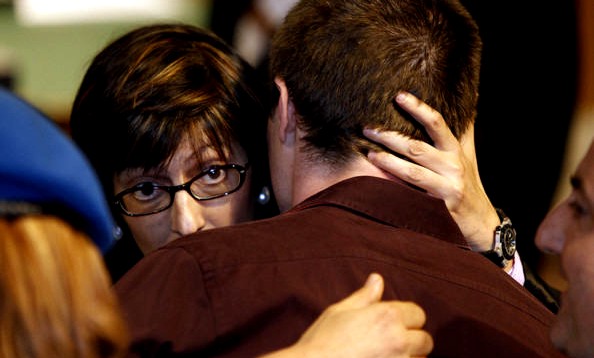
Sometimes it can be frightening to see how people’s self-interested choices turn around to bite them instead.
Had Knox and Sollecito simply told the truth to begin with, this case would have been only a nasty local story in Italy, with a bit of light coverage in Seattle and London. They would have had to accept some narrative that explained their involvement and their guilt, and they would have been sentenced accordingly.
They would then have served their time and gotten out. Eventually they would have gone on, perhaps, to live relatively normal lives.
After all, by the time they left prison virtually no one outside the families involved would remember, or much care, what they had done. Their criminal records would follow them forever, of course, but certainly there would have been no public repercussions for an obscure murder in Italy, years in the past.
People live with such pasts: they live their lives and create a future despite their pasts.
Instead, Knox and Sollecito have rendered themselves toxic for the rest of their lives. Everywhere they go, as long as they live, they will be recognized, whispered about, and pointed out by supporters, opponents, and even the relatively uniformed public.
Always.
Already, Sollecito’s Austrian side-trip was busted by someone who, predictably, recognized him. The intense paparazzi effect will eventually wear off, but years from now, whenever either of them does something simple, its effects will live on.
Apply for a library card ““ instant name recognition, walk through the airport - and someone will realize why that face is familiar. They’d better get used to it because some stranger will always recognize them. At their every life event, there will be a news alert, and someone potentially selling the story or a photo.
They and their families deliberately established an intensive PR effort for selfish reasons: in order to avoid the repercussions of a terrible act.
But this press creation is a terrible beast. Now that it is here it will need to be fed. Always. Get drunk in public - someone will have a cell phone handy; a marriage breaks up - the ex-spouse will tell all. (And, really, neither of them has the kind of money needed to live forever insulated from the vulgar public.)
For the rest of their lives, in everything they want to do, the whole did-they-or-didn’t-they narrative will be weighed in other people’s reaction: Would you hire either of them for anything? Would you rent them an apartment? Elect them to the school board?
All other things being equal, there will always be someone else available, someone equally good who has no awkward history. And everyone will know about that history; they worked hard to make it so.
And I’m not talking about the prejudice against ex-cons. That’s a real thing, and it will have its impact too. All convicted felons have real problems, after all, but few of them have achieved such notoriety, let alone embraced it. What I’m talking about is the impact of even old-news celebrity, of always now, and for the rest of their lives, being tabloid fodder.
Sure, there will always be people (Mad Pax?) drawn to the faux glitter of it all, but a life accompanied only by those wanting to share in your “fame” seems pretty ugly to me. What normal person wants the hassle of becoming involved with something like this?
Furthermore, they will never know when someone they think of as a friend might suddenly start thinking of a way to cash in. There might be a book in it, or at least a juicy article for a tabloid.
This isn’t meant as expressing any kind of sympathy for them at all, by the way. They have blood on their hands and horrors in their heads.
Eventually they may come to some kind of terms with their actions. Frankly, though, I hardly care, for it is not merely their crime that requires expiation. I have been sickened to see the unfolding ruthlessness and the sheer ugliness of their publicity campaign.
At its center their PR beast reveals an utter selfishness that is willing to appeal to the worst in their supporter through appeals to American xenophobia, to racism, and in smears against Meredith, Rudy, and Patrick, as well as the entire system of Italian justice.
The PR beast they created denigrates every other element in the case, while portraying the pair of them as young, innocent, and only guilty of a visible passion for each other and a naïve belief in the police.
This tactic required a media product for sale: the attractive young lovers. Their campaign has forced their names, and images and story in all our faces for years now. They and their families did this entirely voluntarily, and they have seemed to relish the attention it brought them.
They’ve been interviewed extensively, treated sympathetically by those who should know better, and altogether have had much more than their fifteen minutes of fame. But celebrity is a beast that turns on its own.
And, importantly, unlike other famous people ““ actors, politicians, authors and the like - there is no proper use for their fame. They have nothing real to share with us, only their story. It is, literally, all about them. And that is how it will remain.
They have become a narrative whose next chapter will always be told. The PR beast, for all its reach, will not be enough to keep them out of prison. But the cameras will be there the day they finally leave prison, in case we have forgotten their faces.
And there will be photos when they drive drunk. Or marry. Or divorce.
Their names are out there, waiting for the tagline, waiting for the joke. (“How bad is your new roommate? Well, at least she’s no Amanda Knox.”) There will be no end to it, ever. They will have no privacy, ever. Karma at work is a scary thing. They invited the beast into their lives, and now it will never leave them alone.
[Below: Said to be Amanda Knox leaving home hiding under a windcheater]
